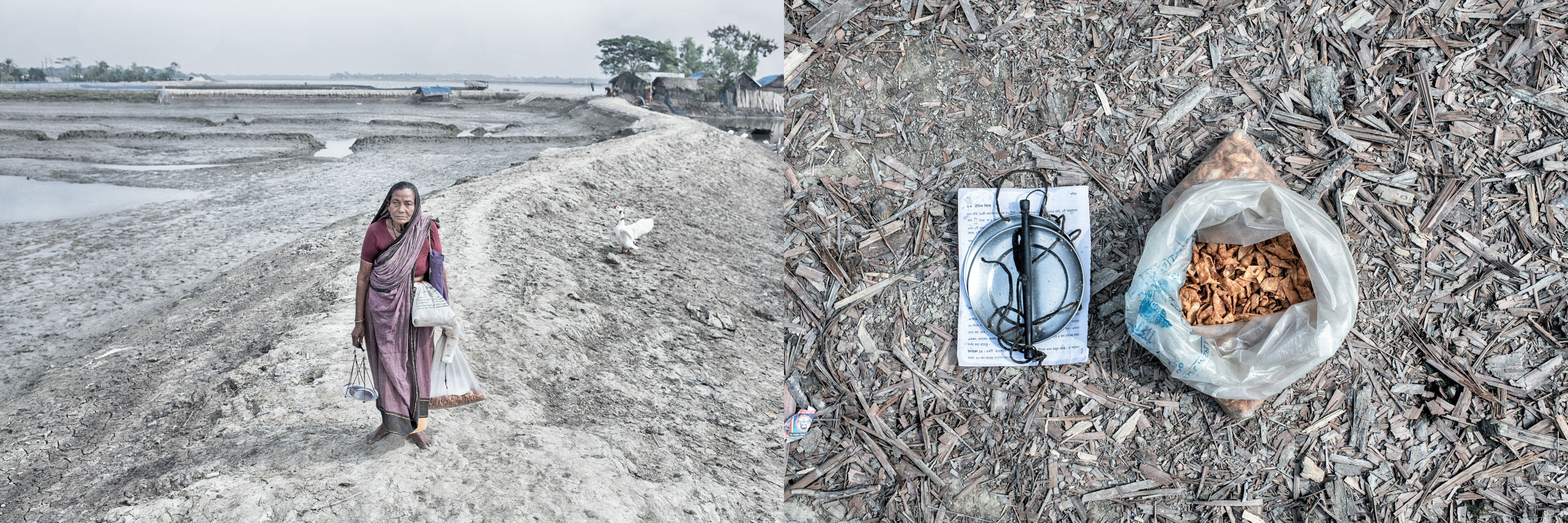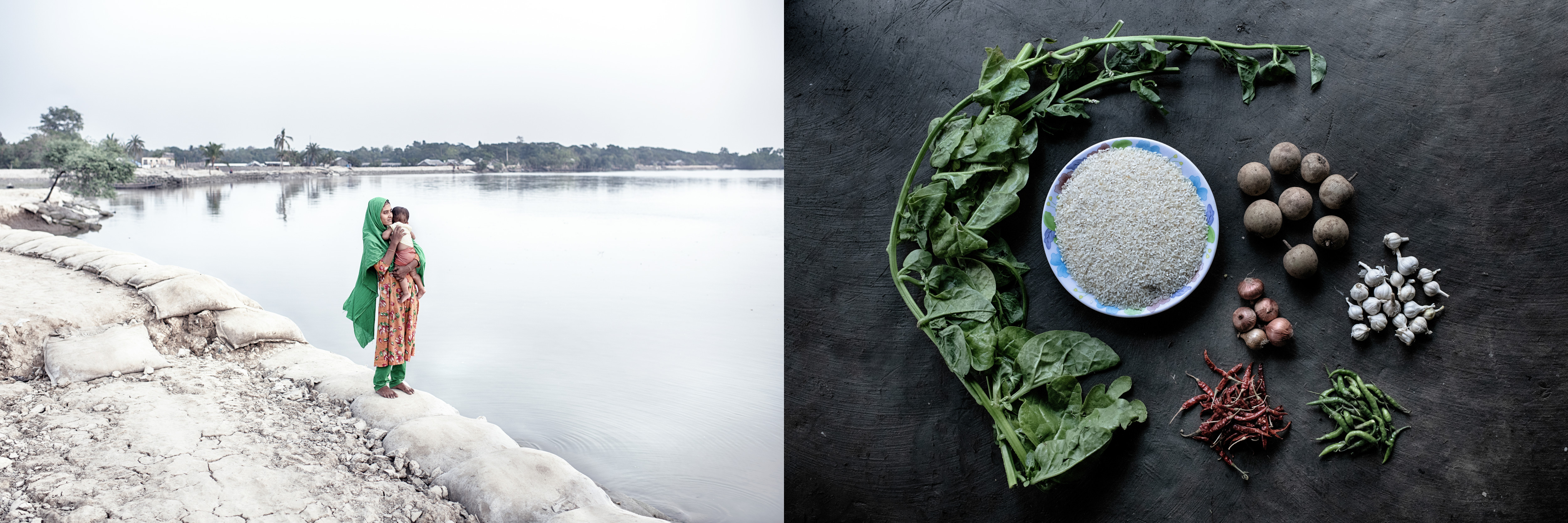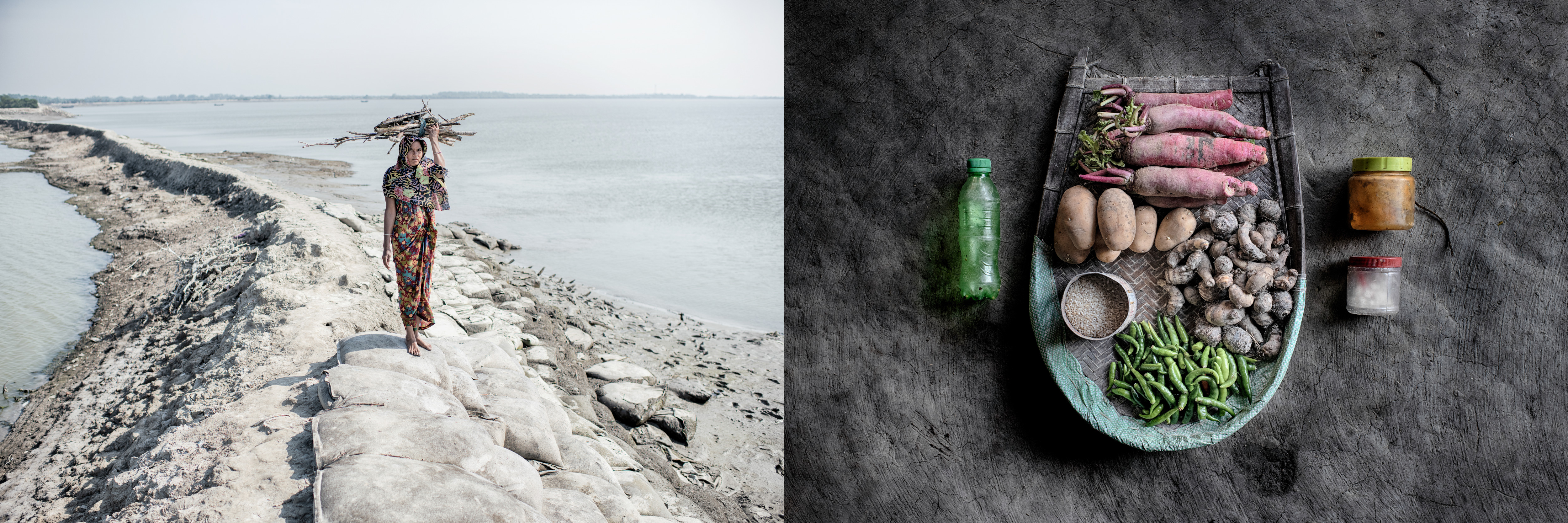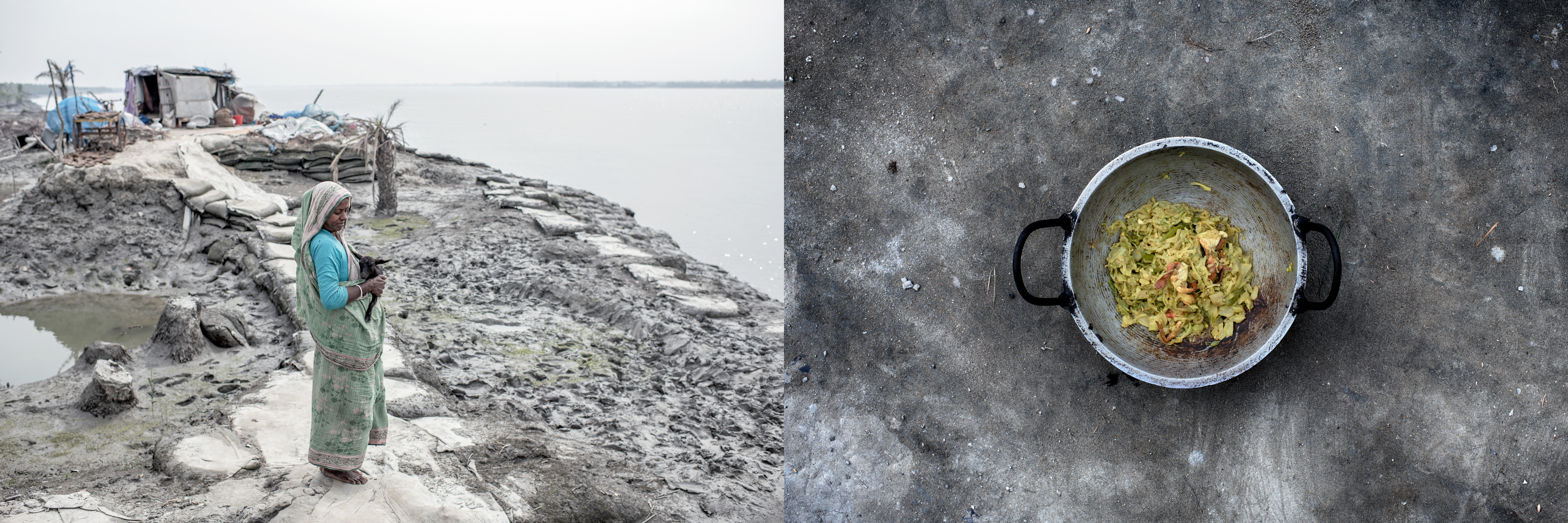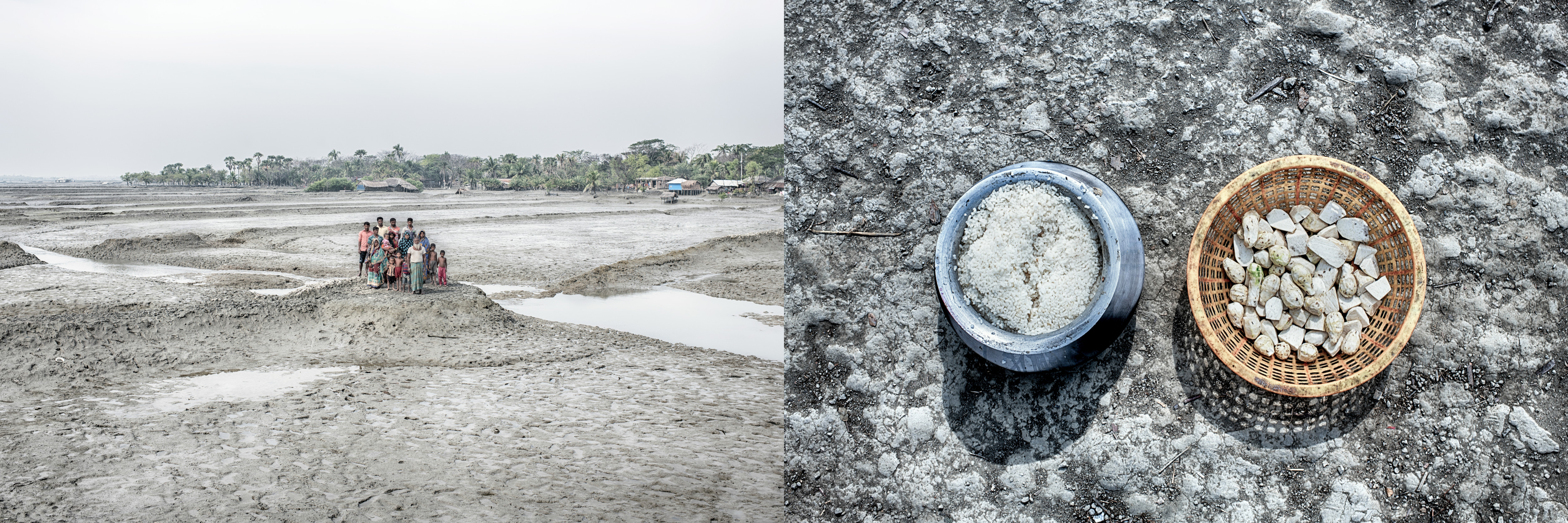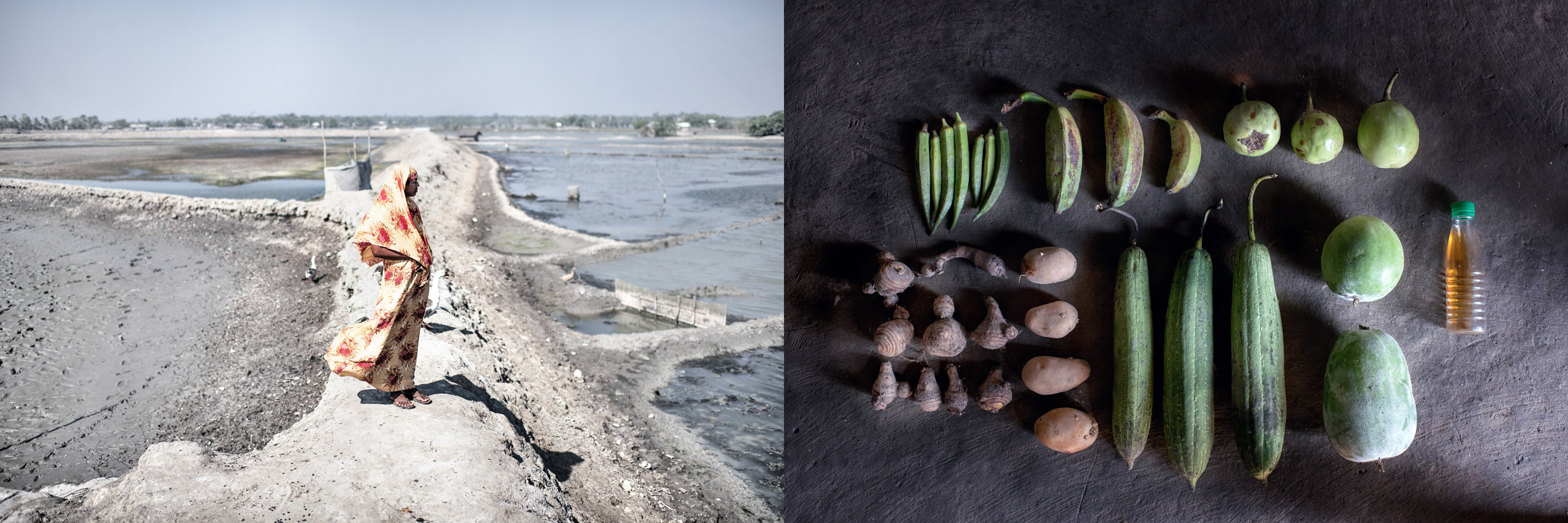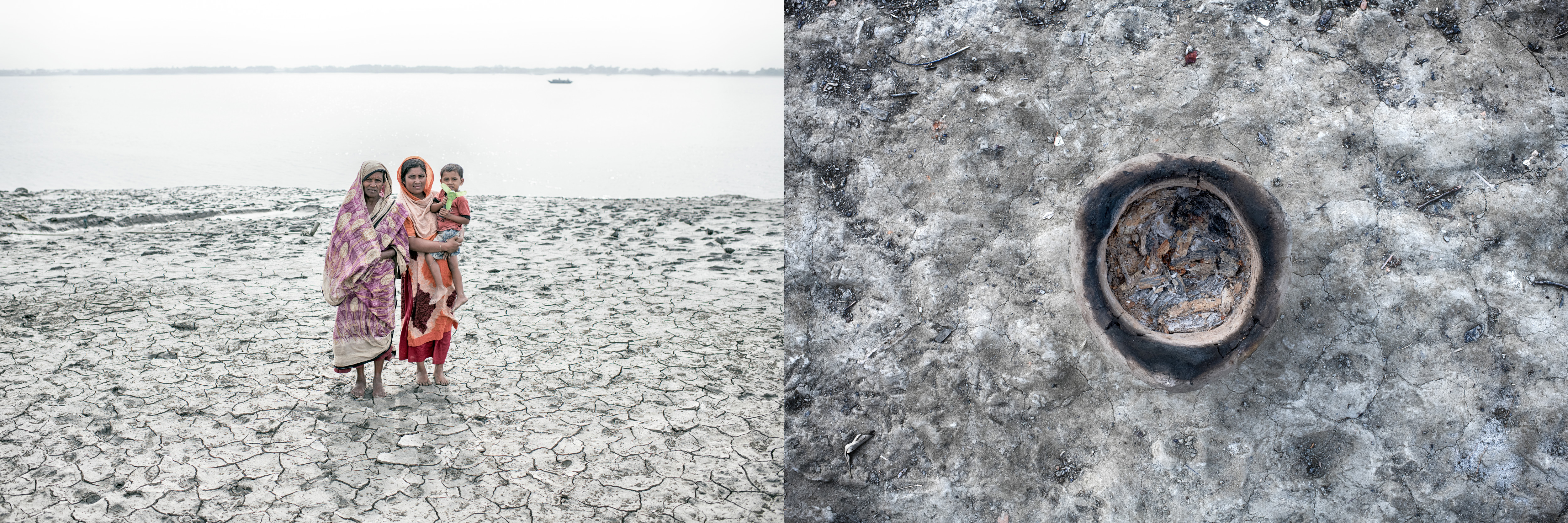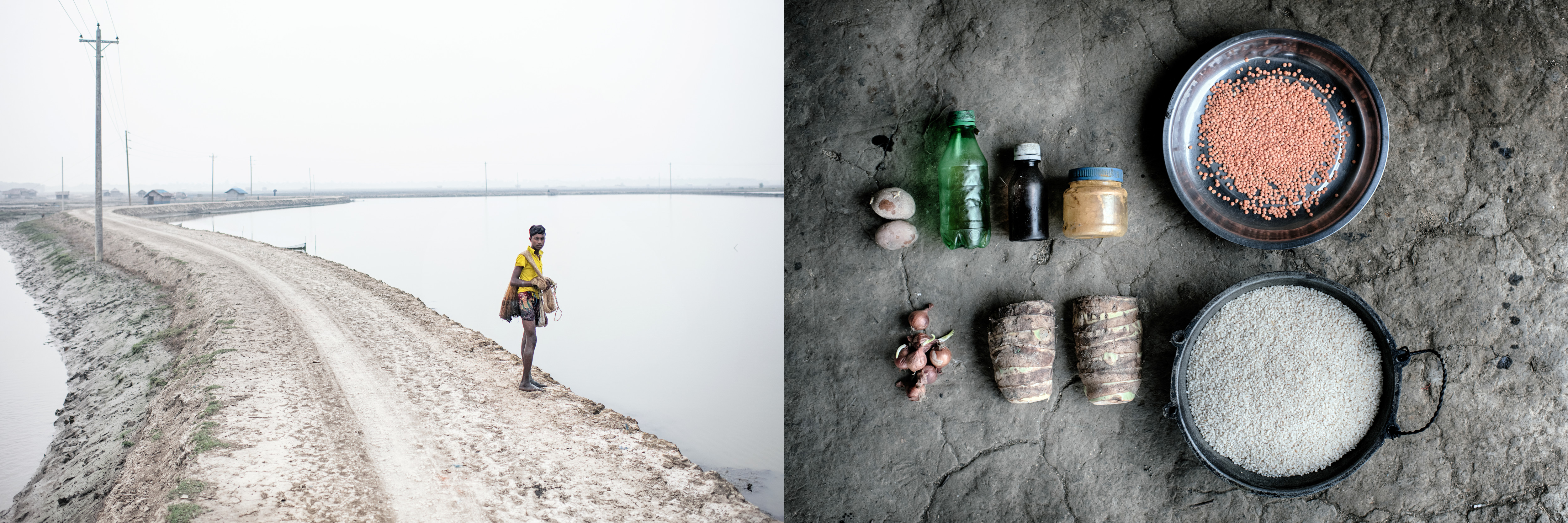The winners
Painting
Yunchen Yu
Bio
Yu Yunchen,age 8, is a pupil of Fuzhou Chayuanshan Central Primary School. She likes playing the violin and belives that Mother Earth protection begins with the heart and the action.
Art abstract
Let us try our best to protect our beautiful Mother Earth from today. Our Mother Earth is so beautiful. I love her so much. However, severe weather conditions, natural hazards, environmental pollution, PM2.5 in the air, serious shortage of water resources, the desertification and so on are happening. I am worried a lot that our Mother Earth might be ill. We have to do our best to protect her from now. Otherwise, we may lose her one day, and then the aliens come. The aliens are sighing how beautiful the earth used to be and how dirty it is now. They are all sorry for what people have done on the earth. Aliens throw the saplings into the nutrient solution, guide the bottle of nutrient solution to the earth, and the earth becomes lush again. But where are people? This shall not happen! Let us try our best to protect our beautiful Mother Earth from today.
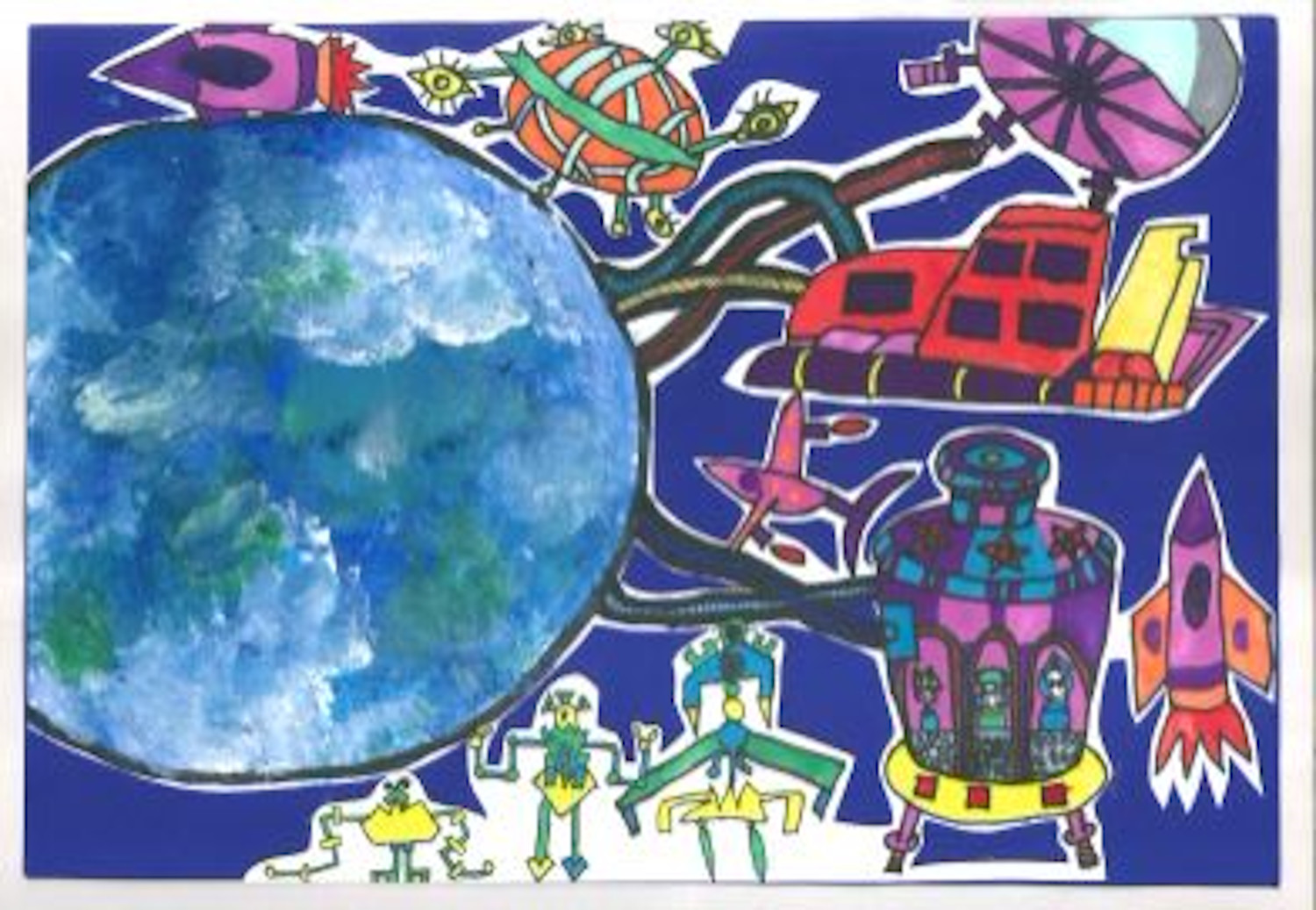
Klara Maisch
Bio
Klara Maisch is a visual artist living and working in Alaska. Mountains, glaciers, and geologic forms are common features in her large, landscape-based oil paintings. Klara specializes in painting outside in remote areas for extended periods. She is passionate about transdisciplinary thinking and expression through art, science, and the outdoors. In 2021, she created paintings on-site while embedded with a research team studying vegetation and climate change in Arctic Alaska. Her artwork has been featured in solo and group exhibitions throughout Alaska, Washington, California, and Hawaii. She is currently creating a series of paintings about wildfires and landscape change in collaboration with the Bonanza Creek LTER through the "In a Time of Change" program. She is also finishing work for a solo exhibition titled "GroundTruth" for the International Gallery of Contemporary Art in Anchorage, Alaska, on display in February 2022.
Art abstract
My work as an artist is rooted in firsthand experiences with weather, light, and land. I am fascinated with the interactions of glaciers, geology, weather, climate, and the visual traces of geophysical events we can't directly see or access. I painted on a glacier for the first time in the winter of 2018. This foundational experience inspired me to develop a lightweight art kit to ski and hike into remote areas to paint throughout the seasons. This approach has become the core of my art practice. When I paint outside, I share the unique conditions of a specific geographical position in time. I see the massive forms of a valley carved by a glacier, the intricate patterns of sediment deposition, and the charcoal black basalt dikes revealed by a contracting body of ice. I hear rocks tumble, water running, and the soft sound of snowfall. I feel shifts in the wind, temperature swings, and the texture of the ground beneath me. I use all of my senses to tune into the unique movements and tempos of my surroundings and translate these embodied experiences into marks on the canvas. Painting outside challenges me to constantly readjust my understanding of place. By creating artwork about landscape change, my goal is to make complex Earth processes tangible and help people re-connect with the vast natural systems we all impact, depend on and share.
In 2020 I started a repeat painting series of the Gulkana Glacier in the Alaska Range, a location I have returned to year after year as an outdoor educator, skier, and artist. The top painting is from September 2020, and the bottom is from the same site and timeframe in 2021. Together they represent the first two years of an ongoing repeat painting series of the Gulkana Glacier. I chose this specific place because it is a visual landmark for measuring climate change. I see more rock and less ice on every visit, so my experiential-based estimate is that the icefall on the left of the nunatak will be gone within a decade. By hiking or skiing to paint in the same place every year, this work is equal parts performance and visual art. Although a repeat photograph is more accurate, I am interested in the expressive power of art and sharing the experience of sitting with a glacier over an extended period of time. The Gulkana is one of two USGS benchmark glaciers in Alaska, meaning there is ongoing data collection and decades of mass-balance monitoring and research. I hope that this project adds a qualitative layer to the scientific understanding of how and why the Gulkana Glacier is changing.
Image description: Two stacked panoramas of oil paintings measuring 16" x 44" each. The top painting was painted on-site over three days in September 2020. The bottom painting was painted on-site over two days in the same timeframe in 2021.
(Please note I am happy to provide higher resolution imagery of the artwork if selected, but I won't have reliable enough internet to do so before the Nov 15th deadline due to travel and lack of internet infrastructure. I really wanted to apply, and I apologize for the inconvenience!)
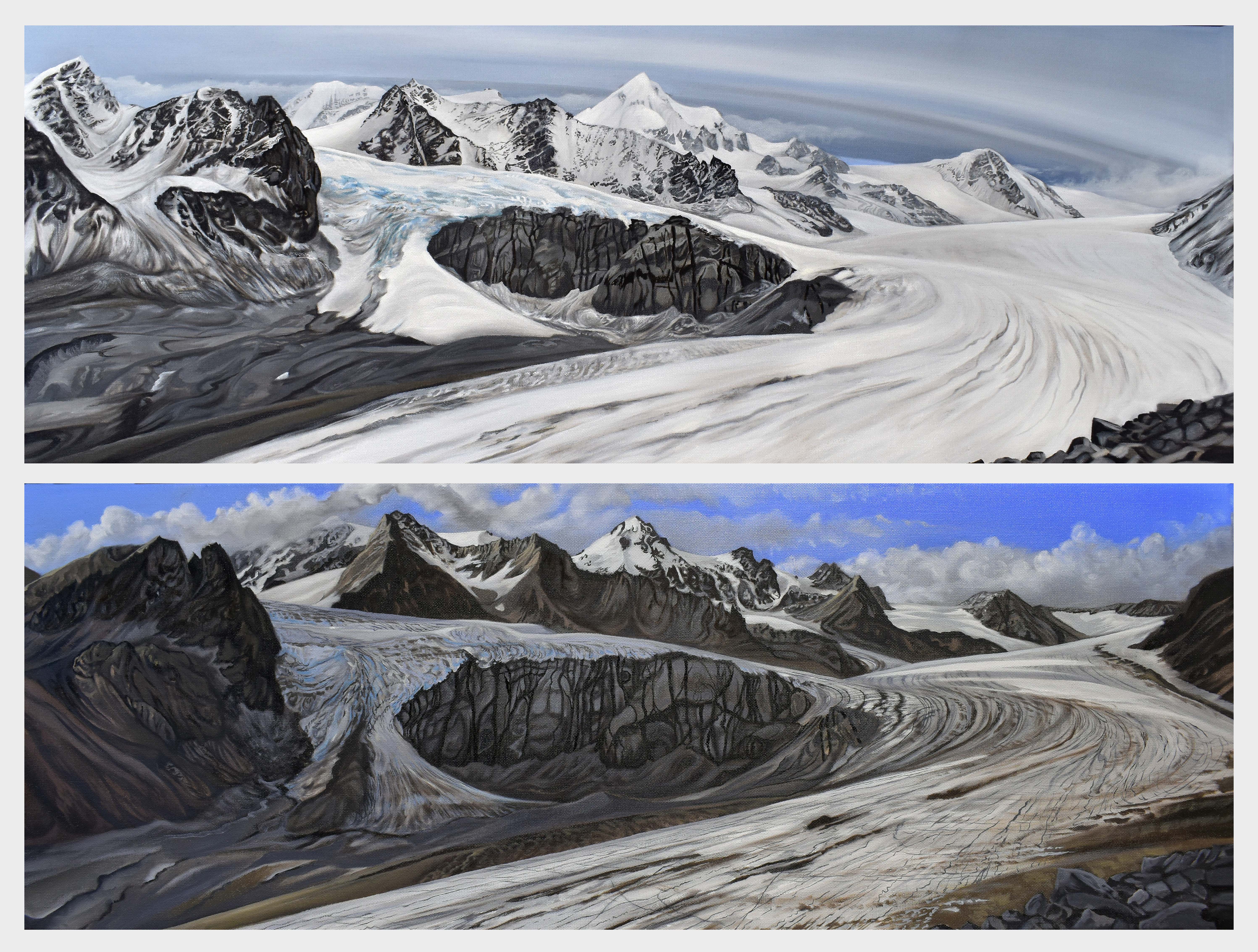
Tara Illgner
Bio
Graduate student at UVA studying atmospheric chemistry, focusing on Carbon Capture, science-communication, and policy. My international upbringing taught me four languages and the urgency of addressing preventable disasters through science-communication. I also hold a master’s in education and spent a few years as a teacher, and am a parent of a son, a daughter, and more recently, a foster-daughter. Our family loves animals! We have 2 cats and a ferret, babysit dogs regularly, and foster many animals through the SPCA. Most recently: working with legislators on science policy and EJ, published several Op-Eds, and Issue Brief, and an article in Medium. I am also a business owner, painter, voracious consumer of news, and an avid cook.
Art abstract
Sitting in this place, I feel Earth's pulse. Trees are the lungs of our planet. Generously, lovingly and silently, they provide innumerable services to all life on Earth. The delicate ecological dance between the soil, insects, vegetation, hydrology, create a simultaneously stimulating and soothing cradle for life. I sat at this very place, on the bank of a creek near my home, on a cool October afternoon, and marveled at the comfort, beauty, and power of the symbiotic life force emanating from every crevice of our Earth. This painting was created using oils on canvas.
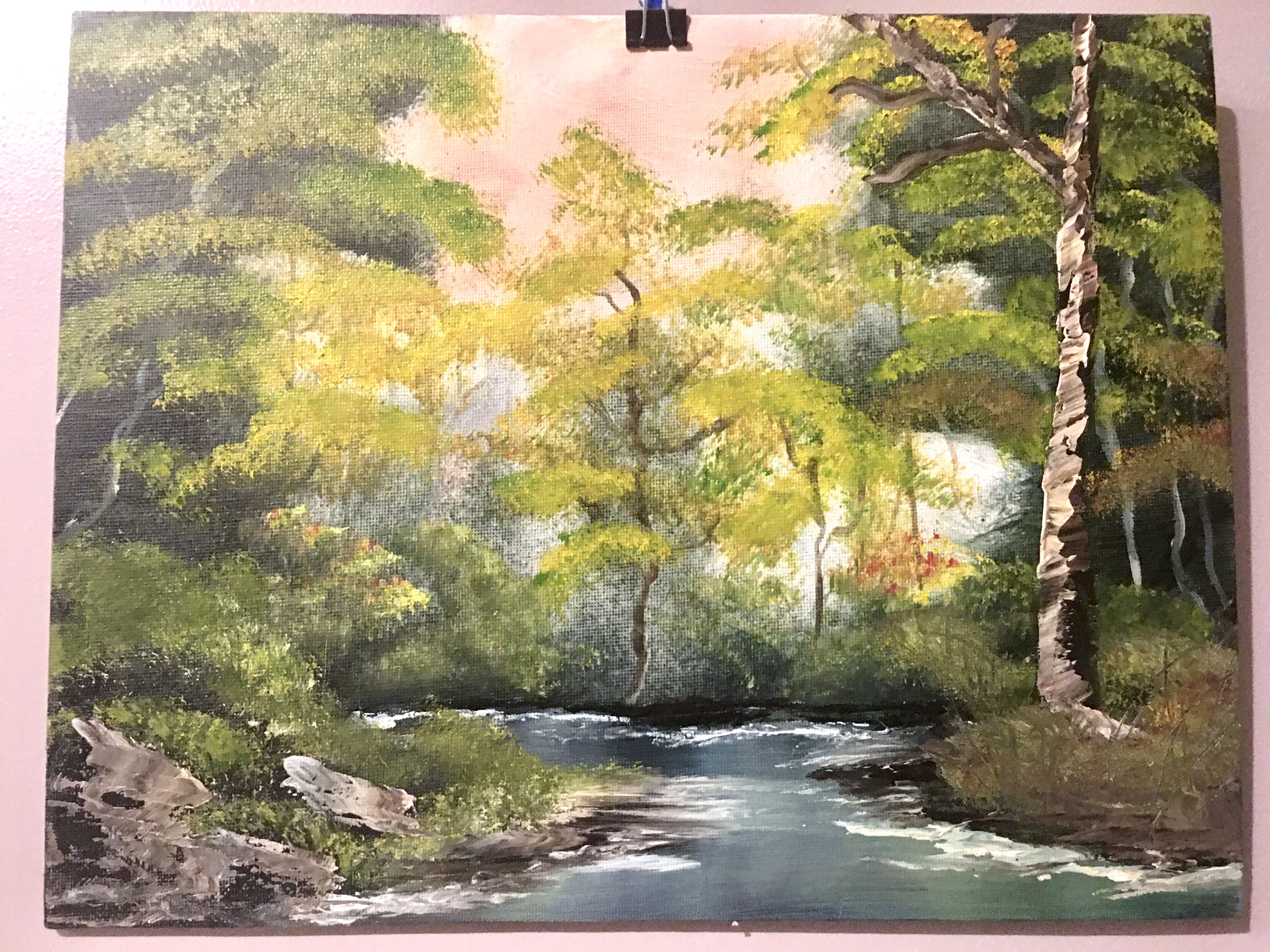
Emilia Novikova
Bio
Student, 7P
Art abstract
For Snow Leopard Day (23 OCT) I produce art work on snow leopards. In this image snow leopard is exploring its new potential habitat - jungles. Due to climate impacts and shrinking snow and ice habitats, these endangered animals face additional challenges for survival.
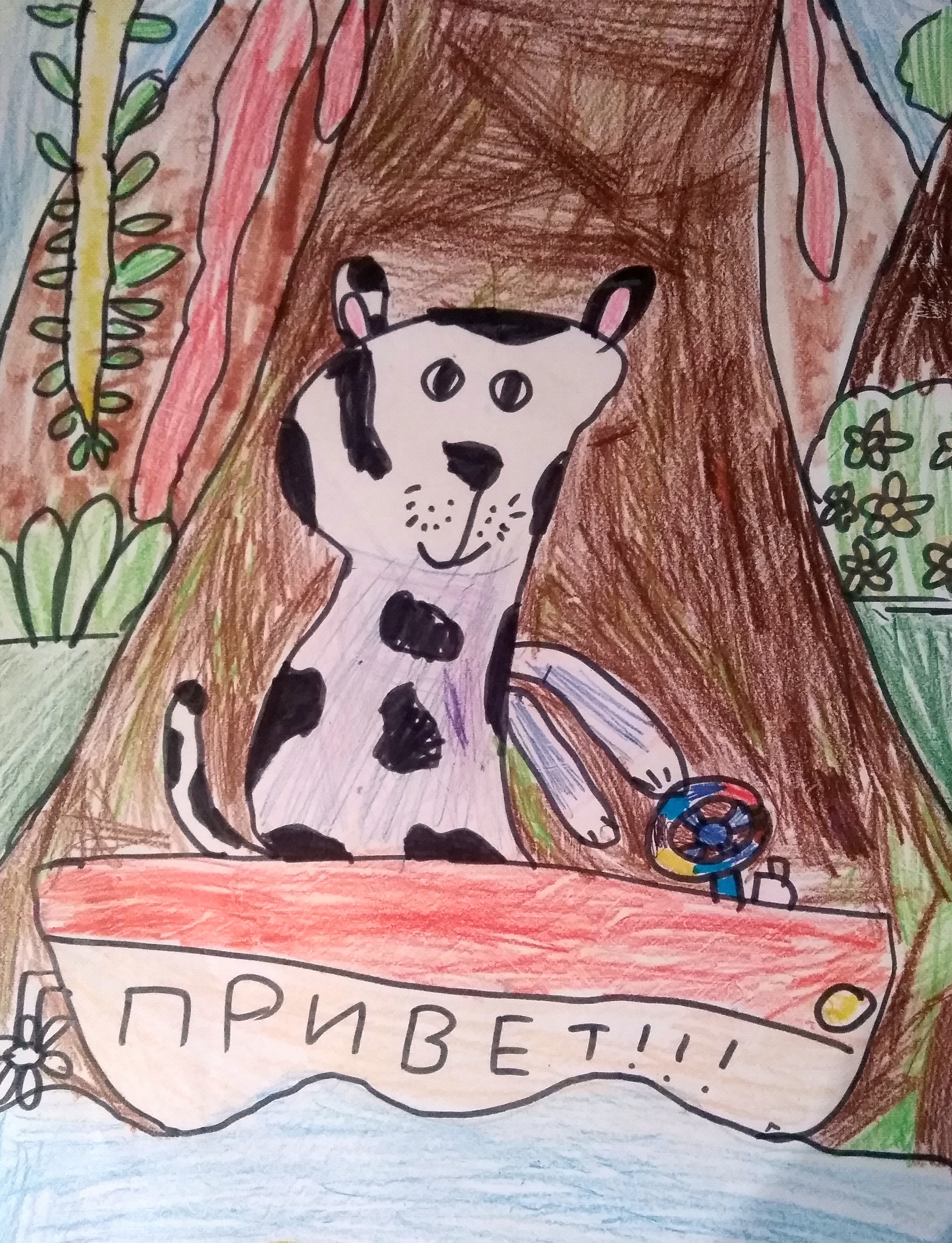
Video & Music
Philip Samartzis
Bio
Philip Samartzis is a sound artist, researcher and curator with a specific interest in the social and environmental conditions informing remote wilderness regions and their communities. His art practice is based on deep fieldwork where he deploys complex sound recording technology to capture natural, anthropogenic and geophysical forces. The recordings are used within various exhibition, performance and publication outcomes to demonstrate the transformative effects of sound within a fine art context. He is particularly interested in concepts of perception, immersion and embodiment in order to provide audiences with sophisticated encounters of space and place. Philip is the recipient of three Australian Antarctic Territory Fellowships which he is using to construct a sound map of Eastern Antarctica.
Art abstract
In 2019 I was awarded a fellowship by the Swiss National Science Foundation to undertake a series of sound recordings of the High Altitude Research Station at Jungfraujoch (HFSJG) to register the increasingly stark relationship between rapid industrialisation, human actions and the alpine environment. The project emerges from the work I am doing mapping the effects of global warming in Antarctica to reveal the changes occurring in a place central to the health and well being of our planet.
I travelled to Jungfraujoch with a completely open mind as to what I might encounter there. I was particularly fascinated by the science undertaken at the research station, and how one might frame it within a sound art context. I often think of my practice as an extension of Italian Futurist art movement who embraced social and technological disruption as a way of charting the dynamics of progress. I therefore perceive the Bernese Alps as a construct of the built world understood through the infrastructure and technology used to monitor it from a safe vantage point. By this I mean that the alps are as much defined by its roads, tunnels, bridges, cable cars and trains as they are as its peaks, glaciers, rivers and valleys, which together coalesce to suggest complex ways in which the topology may be interpreted.
During fieldwork I used omnidirectional microphones to register wind, snow and ice as well as social, material and industrial sound emanating from the train terminus, businesses and viewing platforms. I deployed hydrophones within water and ice to record geophysical sound resonating within the frozen environment. I attached accelerometers to various metal surfaces and structures to record solid vibration generated by high velocity wind, snowfall and the process of melting and freezing. Additional sound recordings were produced around the base of the mountain range to capture related habitat, glacial carving and snow melt, and additional anthropogenic sound caused by tourist operations, agricultural producers and ambitious new building projects.
My composition Atmospheres and Disturbances is designed to place audiences deep inside an extreme environment to afford embodied experiences of alpine ecologies under duress. Within the composition Bise and Föhn winds dynamically converge to express the precarious nature of life on the exposed ridge. The composition also offers an encounter with the specialist scientific instrumentation used to register upper atmospheric gasses which are central to understanding the long-term consequences of greenhouse gas emissions. Inhabiting these extremes is the research station itself transformed through stress and fatigue generated by extreme climate and weather events and expressed through sonic artefacts produced by hard and permeable materials and surfaces. It is within this framework that Atmospheres and Disturbances offers a portrait of a place in which a future without ice may be a fait accompli. Its sounds like its glaciers similarly at risk of becoming mere apparitions within a spectral landscape.
This project is supported by Creative Victoria; High Altitude Research Station at Jungfraujoch; Institute for Computer Music and Sound Technology at the ZhDK; RMIT School of Art; Swiss National Science Foundation.
Grayson Cooke and Dugal McKinnon
Bio
Born in New Zealand and based in Australia, Grayson Cooke is an interdisciplinary scholar and media artist, Associate Professor of Media at Southern Cross University. Grayson has exhibited and performed at major galleries and festivals internationally including the Japan Media Arts Festival, WRO Media Art Biennale and Imagine Science Film Festival in New York, and he has published widely in academic journals. He holds an interdisciplinary PhD from Concordia University in Montreal.
Art abstract
"Himawari" is an art/science work by media artist Grayson Cooke and composer Dugal McKinnon, featuring data from the Himawari 8 satellite.
The Himawari 8 satellite is a weather satellite run by the Japan Meteorological Agency (JMA). Himawari 8 orbits at the geostationary orbit, and it scans the entire visible disc of the Earth every 10 minutes, focused on the Asia-Pacific region. Its sensor, the Advanced Himawari Imager (AHI), is a multispectral imager that records 16 separate bands of electromagnetic radiation, ranging from the visible well up into the thermal infrared.
Bands 8, 9 and 10 are used in this project; they are all water vapour bands, tracking the movement of water vapour around the planet, at low, middle and high altitudes. Rendering bands 8-10 to the blue, green and red channels of an image results in this stunning picture of the circulation of water in the atmosphere. A watery Earth, with barely a landform visible. And because the images are formed from infrared channels we see no difference between night and day, simply the constant circulation of clouds and water vapour, and the huge upwelling storm systems of the equatorial regions, unceasingly powered by solar radiation.
This work - which actually uses data from a larger project designed for planetarium projection - uses satellite data to gaze back at Earth from thousands of kilometres into space, and in so doing it invokes one of the important findings from the early years of space travel, the “overview effect”, the rise in environmental consciousness experienced by astronauts when they first view the Earth from the outside, as a fragile orb floating in space. This project seeks an experience or response akin to the overview effect in its configuration of different views of the Earth, and especially of the atmosphere. It prompts thinking about climate and how it affects the planet, and how it is changing."
Raquel Santiago
Bio
Raquel Santiago is an international dancer and an environmental dancer originally from Barcelona, Spain, she lives in Nevada City, California.
Her creative process relies on a deep listening to the body in a state of complete presence in the here and now, which allows for the emergence of an expanded consciousness, and for the channeling of creativity and healing. Her explorations in this space have allowed her to develop Alchemy Spinning™, an accessible, pleasurable, and powerful guided practice, inspired on Sufi Dervishes, that takes your body, your mind, and your spirit through a journey of self discovery, expanded consciousness, and higher potential.
Raquel thinks of her work as a service to people and planet, fostering personal and collective healing and transformation. She has been dubbed by the press as “the New Isadora Duncan of the Environment”, because her projects often have a message of consciousness and transformation. She has been performing about different environmental problems as climate change and plastic pollution. She's worked with UNESCO and other nonprofit organizations, and performed at environmental conferences and transformational gatherings, such as San Francisco Green Festival and the Boom Festival in Portugal, for AlbatrossTheFilm, at TEDxCibeles Events, among others events.
She collaborates at ElPlásticoMata, a non profit organization that brings awareness about plastic pollution.
She's trained in a wide variety of dance styles such as Contemporary, Middle Eastern, African, Butoh, Body Weather, Creative Dance and Danza Duende. She has taught dance and yoga for many years.
More at https://raquelsantiago.es/
Art abstract
Dry Tears
Earth dances in circles and cycles. As she spins, so do I; and as she suffers, so do I. Tiles of parched earth paint a fractal dancefloor where I whirl. Pinned to my spot in the cosmos, I seek to transmute my grief into active hope. Into an ineffable transformational power. Each turn brings me closer to myself, echoing the nested orbits of planets, stars, and galaxies, and the spirals of life all around me, and all inside of me. There is a one-syllable-word that I refuse to utter. A word that brings dry tears to my eyes. It speaks of passing clouds that bear no fruit. Of dry winds that loft plumes of dust into the air. Of shriveling plants and screaming trees. Of fishbones scattered over empty lake beds. Grandma says it's never been this bad. At night she sits on her porch and watches satellites fly across the starry night. The old radio announces clear skies and no forecast of rain. Temperatures will be on the rise. She, too, won't utter the one-syllable word. A word that tastes like wildfire smoke and chapped lips. A word that brings dry tears to her eyes, to my eyes, to millions of eyes.
Tears are invisible from above, let alone from space, let alone dry tears. But these tears can be felt and heard and tasted and smelled everywhere these days.
Earth dances in circles and cycles. As she spins, so do I; and as she suffers, so do I. Each turn brings me closer to the ineffable power that lurks behind every dry tear, echoing the planetary dances, the atmospheric dances, the eddies, the nested whirling of ocean currents and tradewinds.
How many more turns before our grief becomes active hope?
This video was filmed on a dried lake on Sacramento's river watershed during a severe drought in California.
Dance: Raquel Santiago
Camera: Velcrow Ripper & Nova Ami
Video Edition: Raquel Santiago
Music: Silhouettes by Tambour [Moderna Records]
Mixed Media
Malú Cabellos
Bio
"Visual artist with a BA in Sociology (Universidad Nacional Mayor de San Marcos) and an MA in Photography (Centro de la Imagen). For more than 10 years, she has worked as a photojournalist and photography editor in Lima’s main news publications. Since 2007, she works as audiovisual director for the documentaries produced by Guarango Cine (www.guarango.pe). In addition, Cabellos has directed short and medium-length films, which have received national prizes (DAFO-Ministry of Culture). Also, she has worked as second unit director in De Ollas y Sueños, a feature-length film that opened Lima’s Film Festival in 2009.
As a photographer, Cabellos has participated in various group exhibits and in two individual exhibitions: Memoria Inca (2007), or the shared memory of the last Inca in Peru’s Andes, and Isla Azul/Rebelados (2018), which focused on the Amazonian city of Iquitos and the history of rubber. In October 2019, Rebelled participated in Portugal’s Imago Lisboa Photo Festival thanks to the endorsement of the Peruvian ministries of Culture and Foreign Relations. Peru’s Ministry of Culture awarded Rebelled economic funding and recognition in 2019.
Today, she is now developing the Fever Tree Project, a multimedia web page about cinchona, which also received the support of the Peruvian Ministry of Culture in 2020.
Cabellos is Mamut Art’s co-director and is in charge of a transdisciplinary team for various art, film, and advertisement projects. www.malucabellos.pe @malucabellos on Instagram
Art abstract
TORRENT
Life in the Amazon Rainforest has been violently shattered through various historical events: conquests, massacres, the exploitation of natural resources, territorial domination, and the pollution of rivers and forests; thus, harming local communities, their cultures and traditions. This is a massive blunder: today’s society, which considers itself advanced and civilized, is devastating life in an essential space for the survival of all of the planet’s beings.
Torrent is a series that symbolizes those fundamental places that are endangered; particularly, water, its beings, and collective cultural memories. These images --each a blue sphere, such as the Earth-- are created through the juxtaposition of medicinal plants, naturalist photographs that I have taken, and historical archives related to indigenous nations that were enslaved during the economic boom of rubber between the 19th and 20th centuries.
All that is driven and churns with violence is a Torrent, but --at the same time-- it’s that creative force that I have discovered when I have sunk my feet into the waters of that great river, feeling its pure and savage current descending from the Andes. It’s a feeling I can’t draw myself from. And, from there, I have started imagining and creating images, spaces and experiences that propose new discourses on Amazonian territories, its rivers and communities.
Within the sphericalness of each piece, time’s corrugated and there are imprecise references of faces, elements, plants, and animals; as if framed in an aquatic world that relates to the phenomenon of muyunas, or the whirlpools that border riverbanks and that are considered, by many cultures in the Amazon, as entry ports to a spiritual dimension.
Today, women leaders of the Kukama nation have presented a legal demand to consider the Marañon River, one of the Amazon’s main affluents, a living being; moreover, they have identified, as part of their argument, muyunas in satellite images and have linked these to stories about their ancestors and interdimensional mythological beings. This worldview opposes grand infrastructure projects, such as the Amazonian Hydro-Highway, which --if carried out-- would have a significant ecological and systemic impact. This case explains why a river is not simply a matter of water, but --rather-- how rights (natural and human), existence, and cosmovision are lived.
Moreover, Torrent seeks to evidence how these conflicts concur through the ambiguity of dimensions: it’s not clear whether images belong to microscopic or air views, or if they are an abstraction of the world we live in, every day; or if they are mythological. Also, whether they witness tragedy or generation: an image can be seen as a continent or as an open pit; or another may symbolize how roots meet, but also resemble a set of cut trees. These myriad interpretations reflect simultaneous processes and the paradoxes of humanity in its inharmonious relationship with nature.
TORRENT
Technique: Cyanotype printed on llanchama, a vegetable bark, Dimensions: 40 cm diámetro.
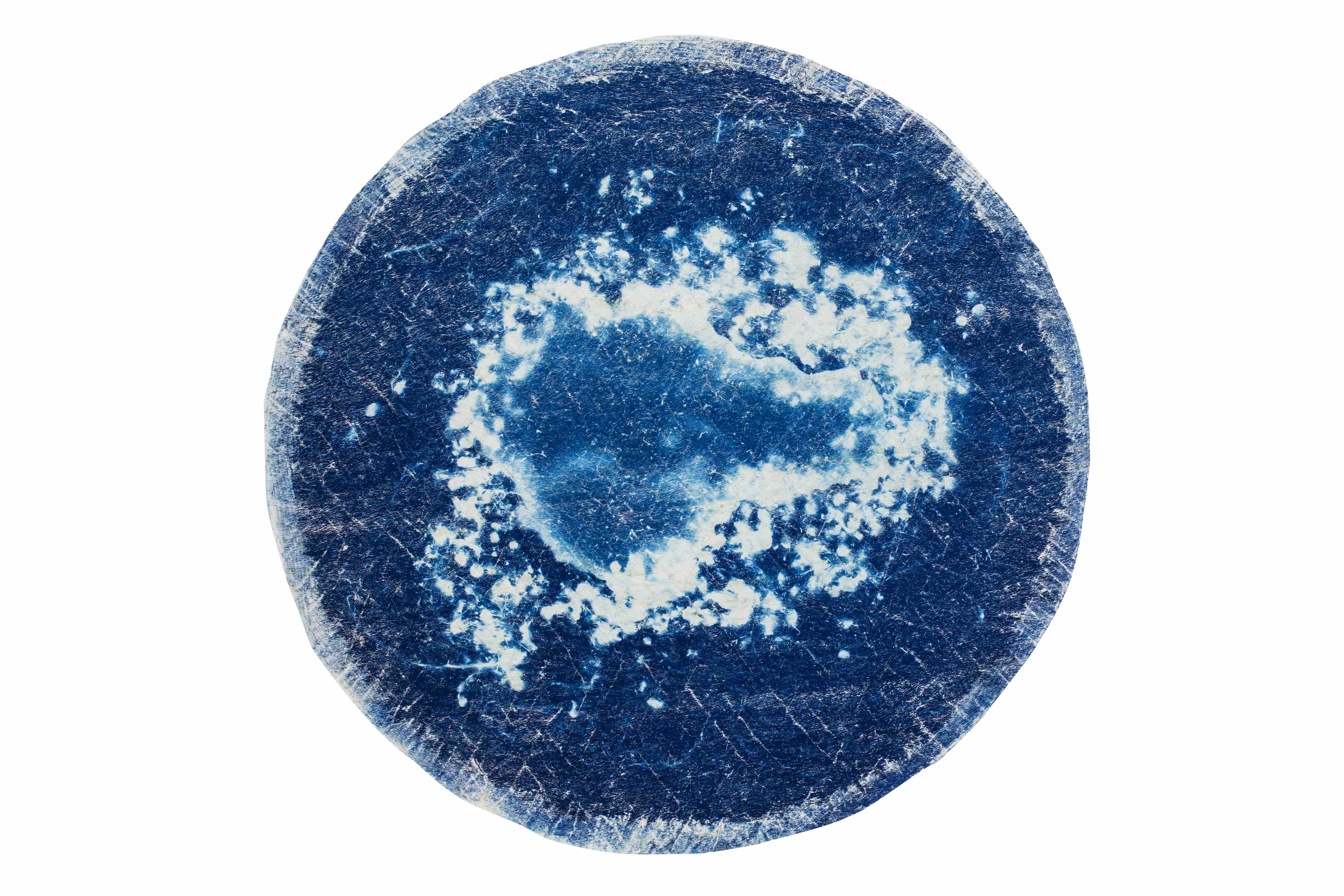
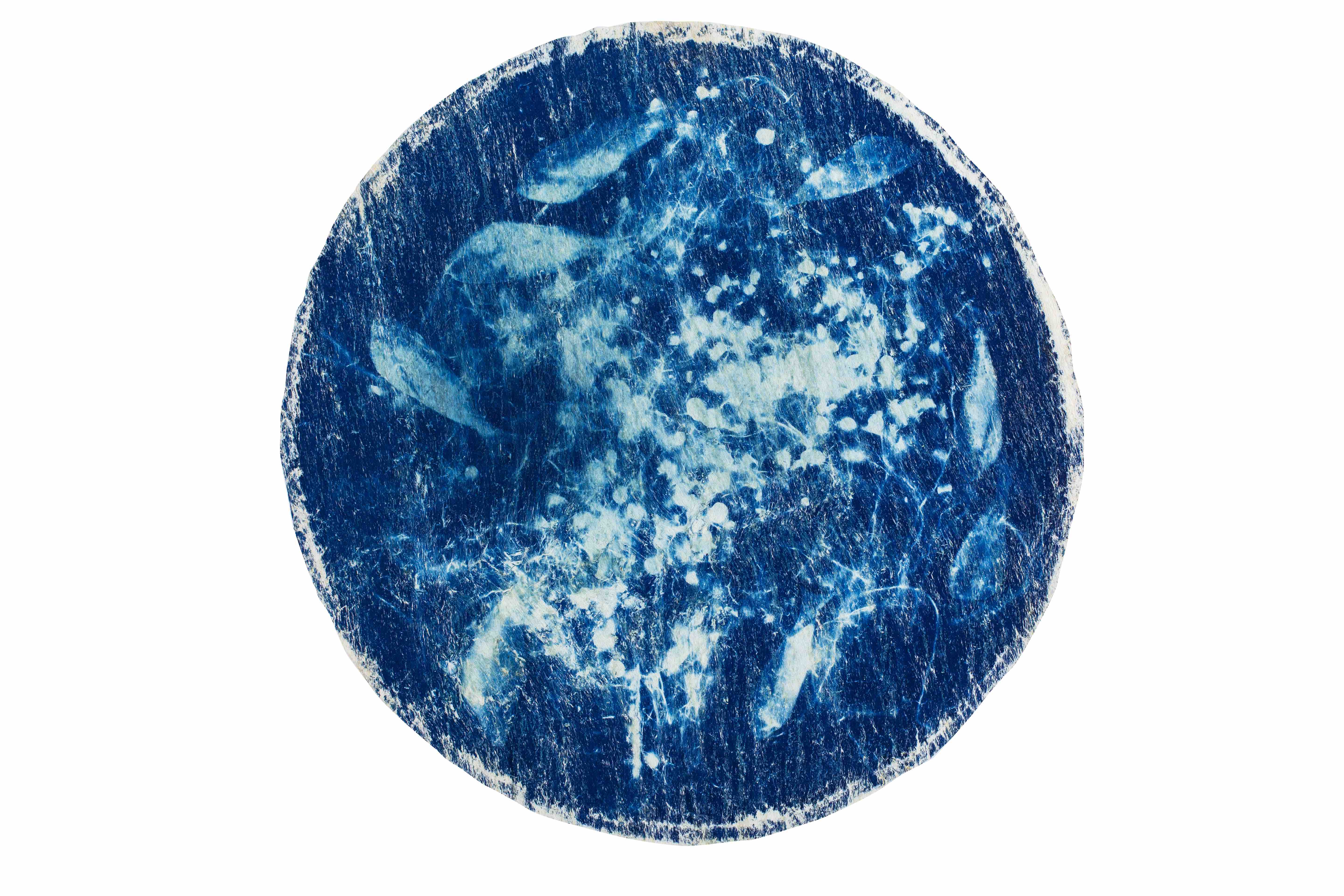
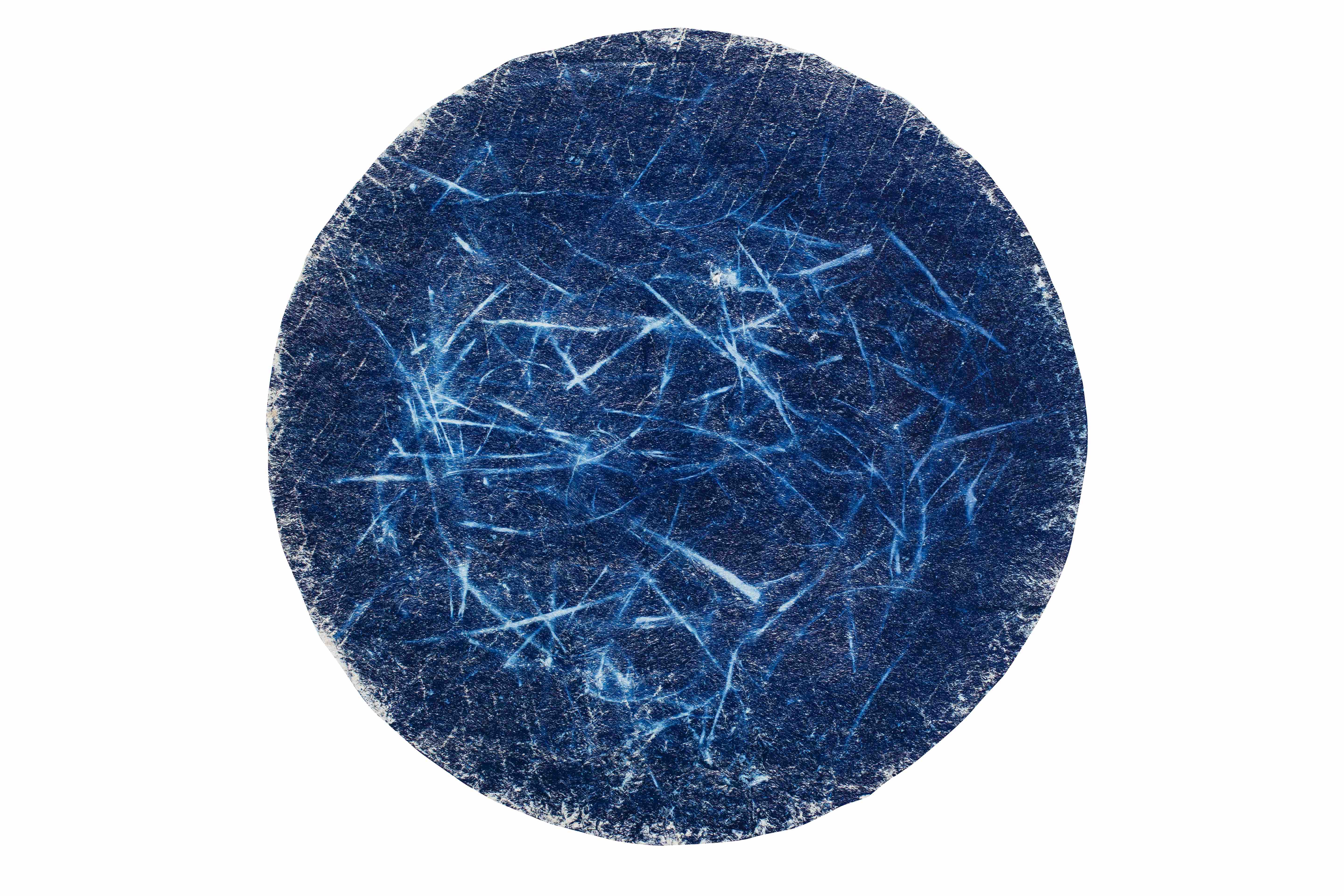
Meenakshi Pradeep
Bio
I am Meenakshi Pradeep.I am in 10th standard.Drawing is my hobby..In that main plots are Landscapes ,freehand potraits.
Art abstract
This artwork's name is Mother Earth.In this the factories and buildings shows human deeds which causes pollution.And the river below Earth's leg shows that, Earth is on the verge of getting drown in chemicals.Mother earth is holding the planet in her arms shows that she still doesnt hate human and is providing them with shelter..It shows Earth's love .And the starry sky shows that the future is not yet dark..and we can still save her. Even though we harm our Mother earth she endures it and keep being our one and only home.
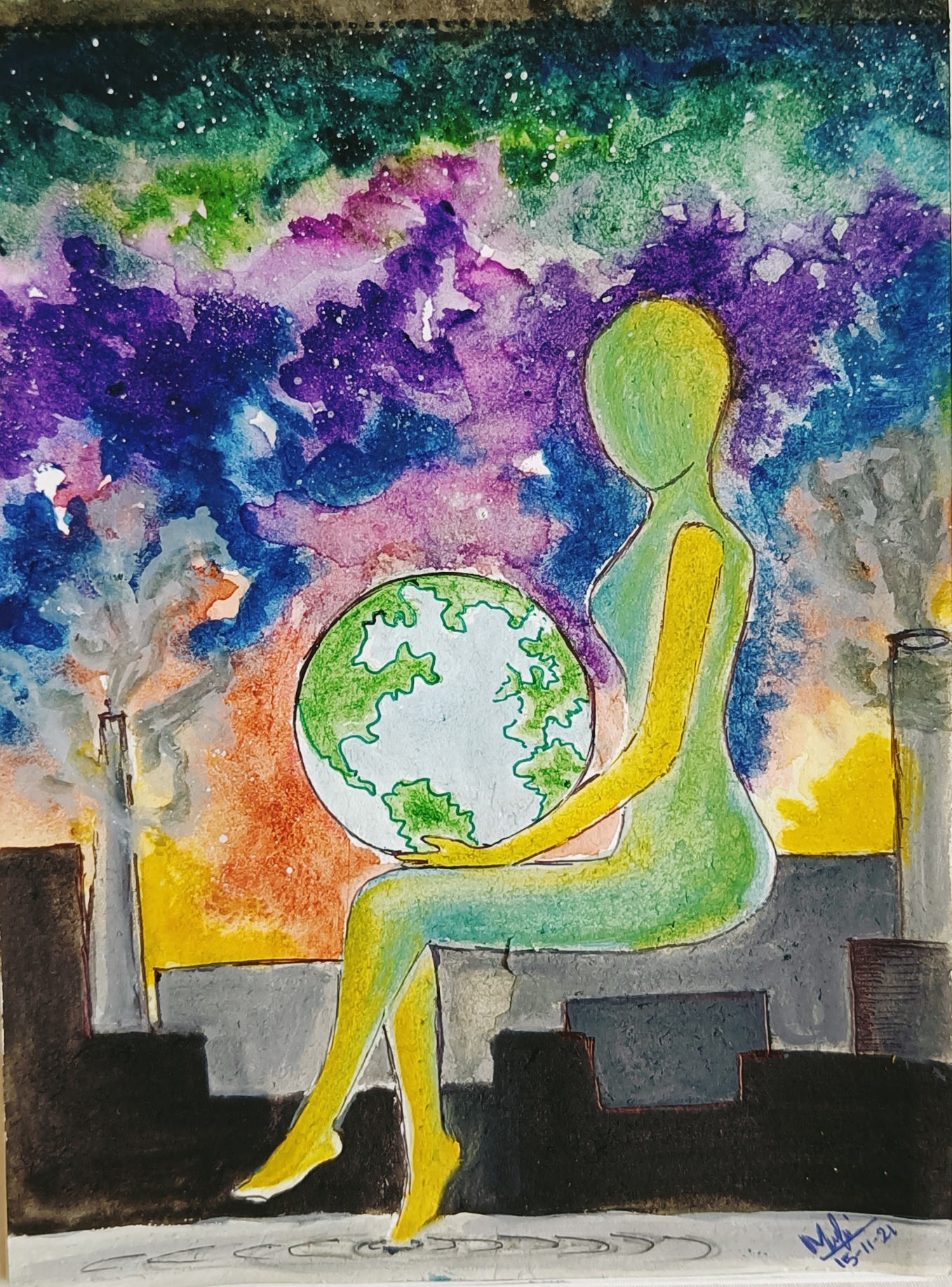
Laila Zhiyenbayeva
Bio
There is no place like home = Planet Earth!
Art abstract
none given
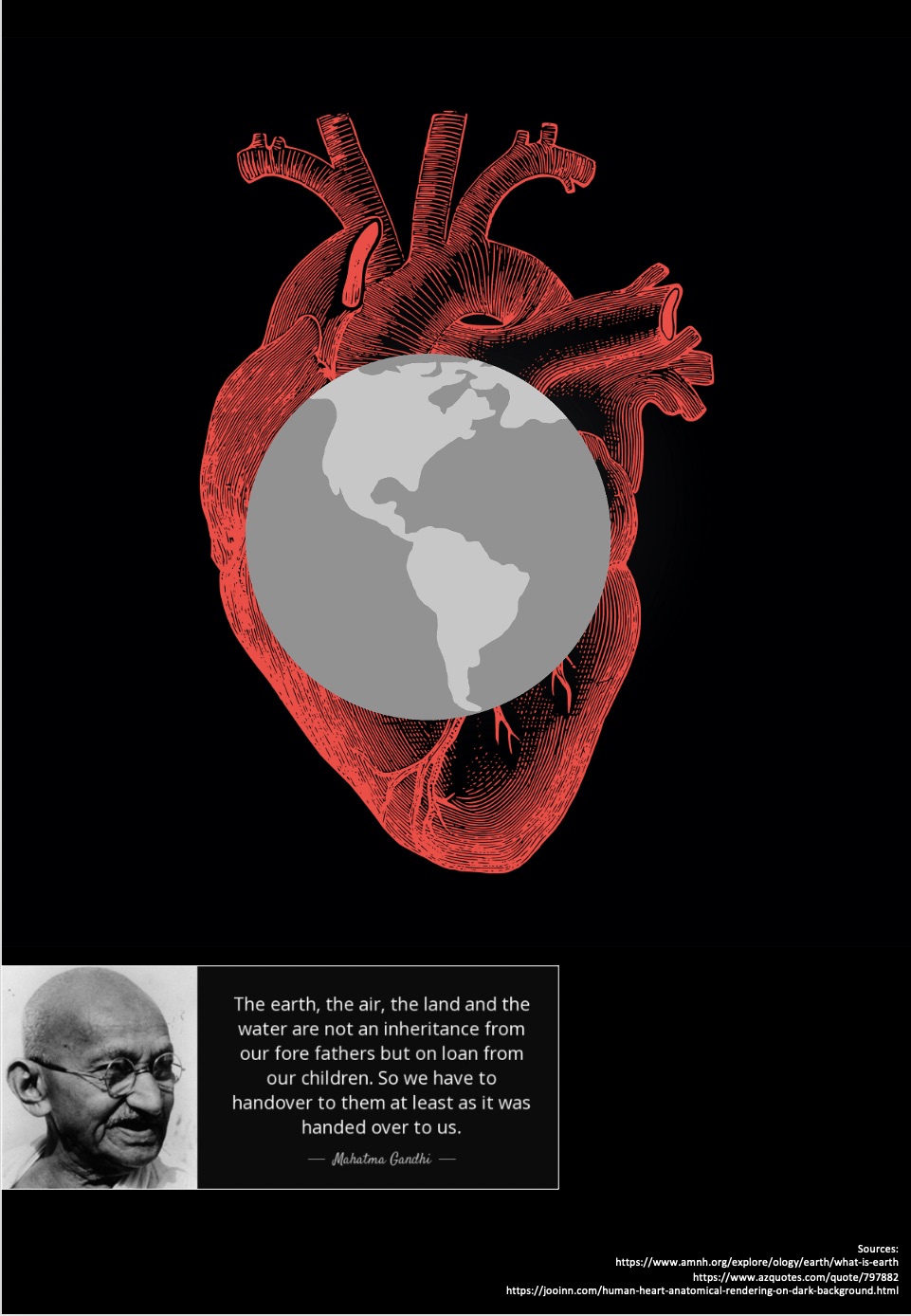
Illustration
Rhea Eason
Bio
Rhea Eason has a diverse professional background, which gives her a unique outlook. Because of her diversity, her experience has touched many different worlds of design and those worlds have also touched and inspired her. Always learning and exploring different facets, she has sparked creativity in others. She bridges the technical into the conceptual, and at times into the whimsical. Her imagery has been published within the educational industry, magazines, books, textbooks and other types of print internationally.
Art abstract
Mother Earth has been given wings! A playful triptych of three multicultural Mother Earths. This symbolizes that no matter where we are from, we are all a part of planet earth. These renditions have leaves as wings to suggest a stronger connection between earth and sky as we discover earth from space.
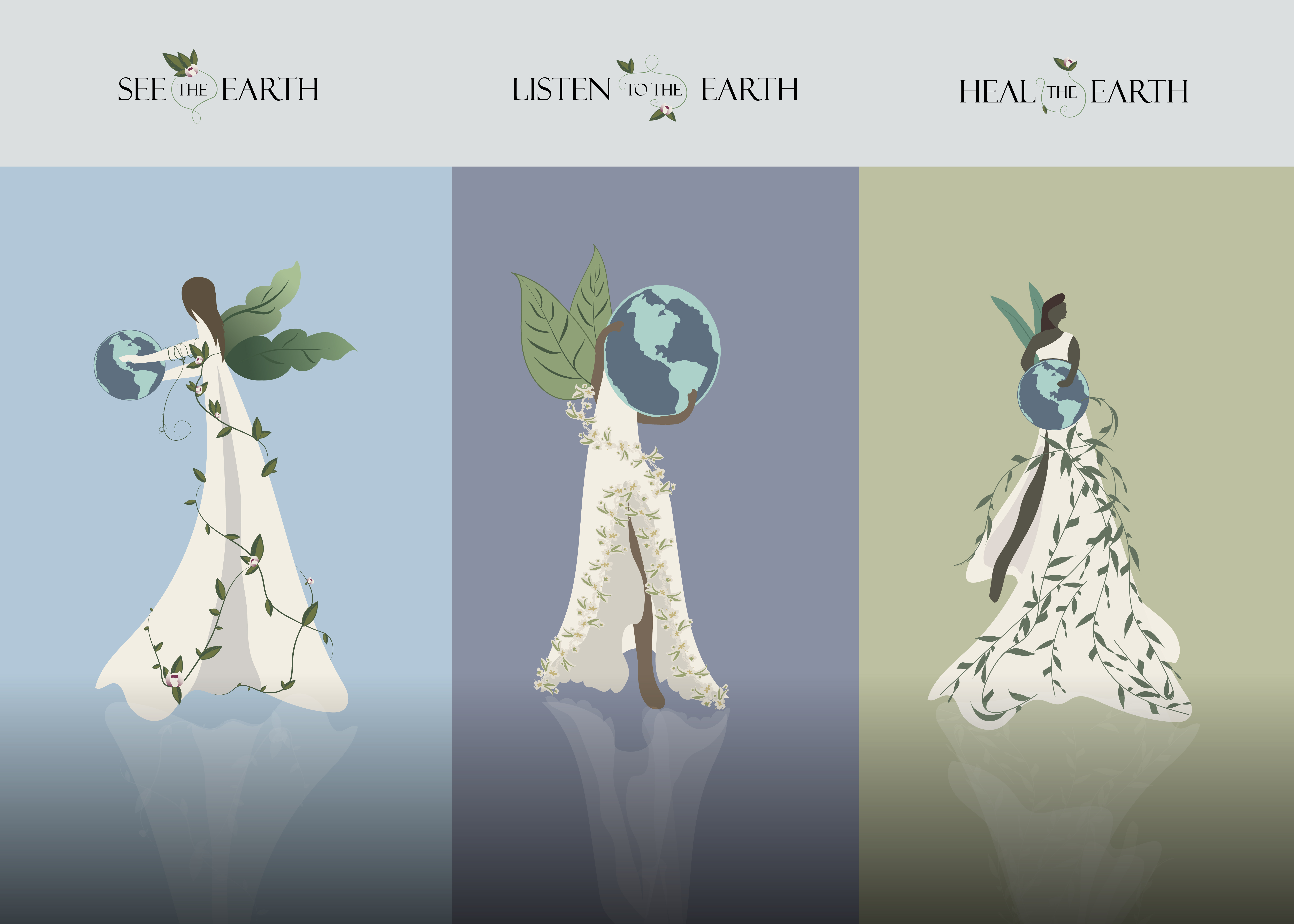
Wieland Kuenzel
Bio
Travelling to Asia after secondary school and joining a Greenpeace vessel inspired me to study Geography. I then worked in development projects for almost 20 years, as volunteer, expert and project manager. The topics evolved from environmental education and agroforestry to nutrition, then health information systems, disaster relief, tsunami early warning and finally satellite navigation. I retired in 2019 but are still active in a range of volunteer projects.
GIS and sailing are my hobbies, building a sustainable future is my ambition. Your Geo Art Competition allowed me to put it all together.
Some points of my bio:
1977 - Crew on Greenpeace Vessel “Fri”, Sri Lanka, India, Mauritius
1980 - United Nations Volunteer, Thailand
1986 - South Pacific Smallholder Project, Tonga
1990 - Ph.D. in Geography
1990 - Fiji-German Forestry Project, Fiji
1995 - Pacific Regional Agricultural Program, Kiribati
2002 - Health Information Systems, Dominican Republic
2005 - UN Humanitarian Information Center, Pakistan
2007 – Tsunami Early Warning Project, Germany and Indonesia
2008 - Galileo Control Center, Germany
2012 - European Global Navigation Satellite Systems Agency, Belgium, France and Czech Republic
Art abstract
“Be the change you wish to see in the world”. The words by Mahatma Gandhi represent a long voyage. “Being” the change requires ambition, courage and determination. Making it have an impact calls for advocacy and collaboration. But before that, the desired change needs to be seen and felt. It needs to be defined and understood.
My artwork is a map that illustrates this voyage. “The journey starts here” is the point where I actually live in Rostock, Germany. The route passes by various stages of curiosity, exploration, understanding and analysis. It cruises by the machinery to promote and advocate (a shipyard in real life). It also navigates past the dangers of bickering and confrontation, however, as well as the path leading to demoralization and disregard. But the charted and desired course is clear. Using courage and determination, it leads to renewal and regeneration and towards a sustainable future. The guiding lights of innovation and transformation are points that exist in real life as well. They are the Warnemuende lighthouses.
I use a Geographic Information System (ArcGIS by ESRI) and Open Street Map Data, which I simplify - removing layers upon layers of detail until just a simple base map with selected points, buildings and spaces remains. I then join these items with new labels. The map is therefore a visual representation of what stands behind it. The vectors and databases that created the map. The contributions of all the people who assembled the Open Street Map data for general and copyright-free use. The canvas of a city and a port that really exist at the Baltic Sea.
And, I hope, a digital twin of a positive path towards a better future, using science and appreciation to achieve this goal.
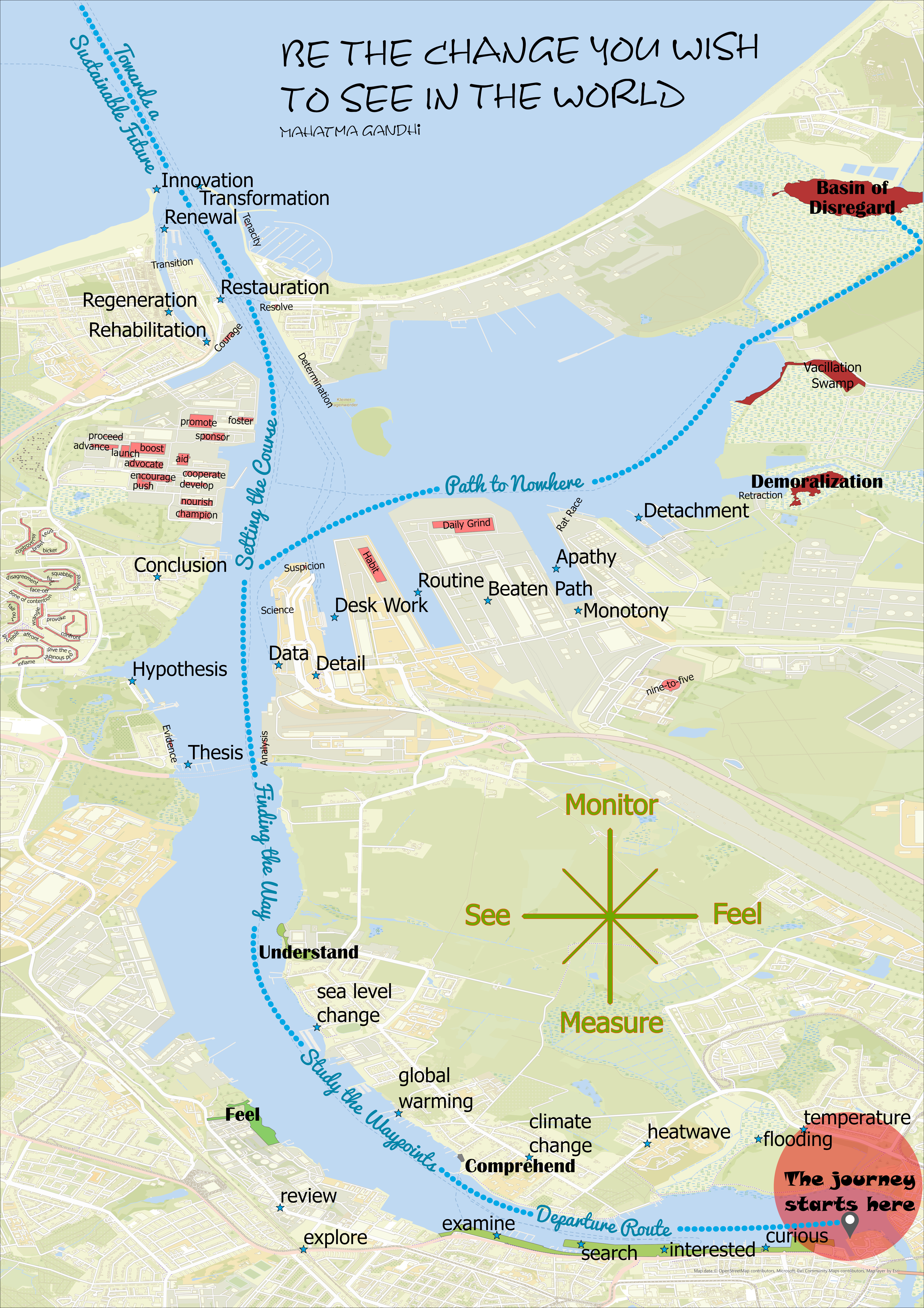
Bernard Dissanayake Methuki Nethma Sanindi
Bio
Our Earth, Our Life
Art abstract
Our Earth Our Life.usually we are living on the earth.waterfalls,animals,plants and more are also related to the environment.we make buildings,houses for our need.but we dont think about the environment.we only think about our selves.we make different harms to the environment. it may collect together and make Air pollution,Water pollution and more.but also we make them again they affect us.These all are done by human activities.So we should not do things that harms to the earth we should do the activities that doesn't harm to the earth then we will have a better and beautiful earth.Our earth our mother it's our duty to protect it.
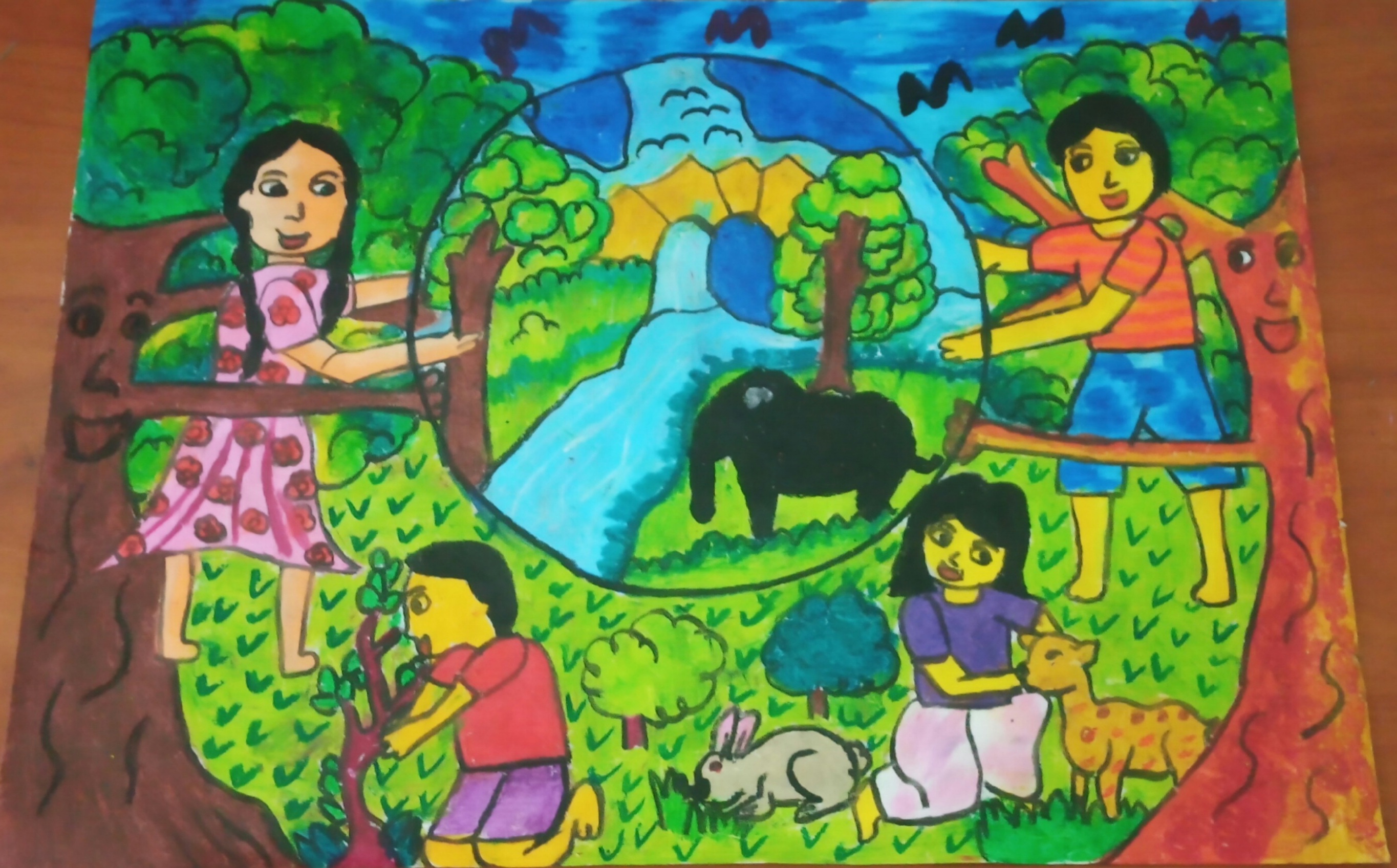
Photography
Christian Klepp
Bio
I am a professional landscape photographer and geoscientist from Hamburg, Germany. Being an avid adventurer, I amalgamate my 20 years of professional experience in Earth System Science and Climate Research with my 26 years of dedicated landscape photography into a geoscientific journey to evoke awareness of how Earth functions and perpetually changes and evolves through the eons of time. To reawake respect and awe for our home planet, to reconnect people with Earth’s spirit and to protect the diversity of our planet is nearest and dearest to my heart and defines me and my way of life.
I photograph pristine landscapes and nighttime starscapes because I love to capture and share these intimate moments of nature's beauty. With my geoscientific background, I blend them with the majestic stories written in the ancient rocks that lie at our feet. My artworks are an amalgamation of reviving our collective awareness for how precious and unique our home planet is.
I continuously push my camera equipment beyond its technical limits to capture images in ways unseen before. I photograph multi-row multi-image panoramas and use my mobile star-tracking device to convey the sheer vastness of the landscapes and the arc of the Milky Way twinkling above a nighttime landscape. This continuous learning process yields ultra-high resolution images that allow for printing in highest gallery quality with no image noise or loss in sharpness. My star-tracking device prevents star trailing and allows photographing myriads of pointy stars with six-minute exposures. A Milky Way arc landscape panorama takes about seven hours to shoot.
In my shooting process, I meticulously plan my images, explore the remote wilderness for locations and plan image composition. Patiently waiting for this fleeting moment of magical light requires dedication and frequent revisits to the location. Some of my images fell into existence only after five years of continuous failed attempts. The moment when finally all conditions align for that perfect display of light, I become so overwhelmed with emotions and feel so deeply connected with Earth’s spirit that I do not even realize how the images fall into existence. It just happens as if it would happen through me.
My aim is that this extra dimension radiates from my images. These photographs are my love poem to our planet and I want them to evoke the bliss of that moment.
Dr. Christian Klepp
Where Geoscience Meets Art
www.christianklepp.com
mail@christianklepp.com
Art abstract
Photo 1: Reconnecting to Earth's Spirit
It is an overwhelming adventure, a time of wonder with light and thunder, to experience a monsoon thunderstorm wave rolling across the Grand Canyon at sunset. Surrounded by storm cells with heavy rain and far too close lightning strikes of a highly active thunderstorm behind, the multiple echoes of the rolling thunders were deeply impressive. The panoramic view at the North Rim of the Grand Canyon near Cape Royal extends from Vishnu Canyon past Wotan's thrones into the sunset in Clear Canyon. The eponymous streams of these canyons cascade their muddy-brown rainfall torrents towards the Colorado River, visible on the far left in the rock gap. The South Rim is located on the opposite side of the Grand Canyon, at a distance of 16 km (10 miles). The Grand Canyon incises 1800 m (5800 ft) deep into the Colorado Plateau. Accordingly, the bottom of the canyon, where the Colorado River is flowing, is up to 18°C (32°F) warmer than the North Rim.
It is impossible to predict when or where, or how often thunderstorms will occur. Therefore, if you want to photograph a thunderstorm scenery at the Grand Canyon at sunrise or sunset, you need either a lot of fortune or a great deal of patience and endurance. Monsoon waves, however, are larger scale weather events and can be predicted up to two days in advance. However, even in these cases the exact time and place of the thunderstorm formation is determined by chance, because the extensive monsoon waves consist of individual multi-cell storms. Monsoon waves therefore increase the probability to experience the desired thunderstorm situation. A temporal restriction to sunrise or sunset, on the contrary, limits the probability of such a situation considerably. In this case, the monsoon break lasted for three weeks in August 2018, during which the sky was mostly clear or partly cloudy. The forecast for this intensive monsoon wave came only one day in advance and the weather phenomenon lasted exactly 24 hours.
The chance meeting between the magnificent beauty of the Grand Canyon and the natural forces of the monsoon storm is further enhanced by the incredible age and geological story of the rocks. The yellow sandstones at the rim of the canyon are 250 million years old and were deposited in a shallow sea near the coast. The canyon floors around Wotan's thrones are already about 500 million years old marine sediments, containing fossils of the first animals ever to crawl across the ocean floors. But beyond these canyons, where the Colorado River flows, the rocks date back to times when bacteria were the only inhabitants of Earth. They are incredible 2000 million years old and consist of alternating layers of sediment and volcanic lava.
It was an unforgettable experience to witness this magnificent scenery at sunset, being surrounded by active thunderstorm cells with lightning strikes in the immediate vicinity. Such moments of great sublimity revive deeply rooted connections to our home planet. These impressions awaken our instincts and with them the irreversible realization how unique our planet is and how closely we are connected to it.
I can supply the original image size if winning.
Canon 5DSR, Rokinon 14 mm, f/16, 0.5 to 4 seconds, 180° panorama from 72 images, 103 megapixels, ISO 100, tripod
Photo 2: Catching Stardust
The Cracked Eggs of the Bisti Wilderness in northwestern New Mexico are among the most otherworldly landscapes on our planet, when viewed under the starry sky of the Milky Way. The almost two meters long (6.5 feet) formation of the Cracked Eggs particularly stimulate the fantasy. One could easily recognize crawling prehistoric creatures in them. In fact, however, what we are looking at is 73 to 70 million year old mud from a shallow ocean. This ocean covered large parts of the central North American continent in the Cretaceous period, during the age of the dinosaurs. It connected the Gulf of Mexico with the Arctic Ocean. Sand, mud, and clay were deposited in alternation in this sea called the Western Interior Seaway. At this time, the Bisti Wilderness, located on its western margin, was a braided landscape of rivers, streams, and lakes with swampy forests teeming with dinosaurs. The Bisti Badlands are therefore rich in dinosaur bones and fossil tree logs. The differential rate of weathering created the bizarre structures of the Cracked Eggs.
In August, monsoon storms frequently develop in the region of the Colorado Plateau, whenever humid air enters the plateau from the south. By dusk, the thunderstorms left the horizon covered in clouds. As darkness fell, distant lightning brightened up the horizon. The impressively bright starry sky far from any city lights paired with the absolute silence in this surreal landscape made a deep impression. In such moments, I humbly merge with nature, becoming one with the landscape and the starry sky.
With my star-tracking device I photographed pointy stars in a four-minute exposure just to add another 30 seconds of back-rotation of the star-tracker, which is equivalent to two and a half hours of star trails. This resulted in a fascinating combination of tracked stars and star trails, with Polaris remaining pointy at the center of the rotation. The remote lightning of the thunderstorms lit up the horizon in diffuse yellow while the clouds stood out in black against the starry sky, completing this image to a unique composition. It seemed to me as if primordial creatures were chasing the stardust falling from the sky.
After finishing my exposures, I switched on my headlamp and recognized a cougar track crossing my own track at right angles. I found the imprint of his paw in my own footprint. This intense and humble feeling of being a visitor in the home of a cougar flooded through me. I felt my silent question, am I welcome here? I did not get to see this majestic mountain lion, but his paw imprint in my own footprint not far from my tripod signaled his answer: I know you are there, I recognize your humility, and I tolerate you in my territory. Had it been otherwise, the cougar would have shown himself and signaled to me that I would not be welcome.
I can supply the original image size if winning.
Canon 5DSR, Rokinon 14 mm, f/2.8, composite of static and dynamic exposures of 4:30 minutes each, 15.312x5.753 pixels, 88.1 megapixels, ISO 1600, Manfrotto 055CB tripod with Manfrotto 410 geared head, AstroTrac TT320 digital star tracking device.
Photo 3: The Wild Embracing Silence
Emerald Lake in Bear Lake Basin of Rocky Mountain National Park is a unique place to enjoy the splendor of the Milky Way.
In August, the Milky Way rises at four in the morning in the gap between the 3877 m (12.720 ft) high Hallet Peak on the left and the 3756 m (12.324 ft) high Flattop Mountain on the right. Because of its perspectively protruding rock needles, however, this mountain appears anything but flat on its top. One day before the new moon, the crescent moon bathes the scenery in an enchanting light. The summer triangle, consisting of the three very bright stars Deneb, Vega and Atair of the constellations Swan, Lyra and the Eagle gleams in the band of the bright Milky Way. The Milky Way itself is traversed by a dark band of interstellar dust hiding the light of the stars behind it.
The trough between the mountain peaks holds the Tyndall cirque glacier, a small remnant of a once impressive valley glacier, which nowadays consists mostly out of frozen boulders and debris to form a rock glacier. Tyndall Creek flows through a number of beautiful lakes on its way into the valley, which include Emerald Lake, Dream Lake and Bear Lake. The cirque forms in which these lakes are located were scoured out by the Tyndall glacier during the last Ice Age.
The mountain range forms the continental divide of the Rocky Mountains, and Emerald Lake is located on the dry eastern side. Tyndall Creek therefore discharges its waters east into the Atlantic Ocean, while all streams west of the divide flow into the Pacific Ocean. When it rains along this ridge, the paths of neighboring rain drops and snowflakes falling west and east of the divide separate ways for a very long time.
Technically, this starscape photograph of Emerald Lake is a 180° horizontal and 180° vertical composite of 9 static landscape images and 9 dynamic star-tracking images, each taken with 14 mm focal length and 4 minutes exposure. The image features a resolution of 171 megapixels.
A night out under the Milky Way at Emerald Lake is such an emotional experience and so far away from our everyday world that the perspective for the essential becomes obvious and apparent again. Our planet is such a unique and enchanting place in the depths of the universe and home to all of us. Such a night teaches deep respect and awe, and implements the sustained desire to rethink.
I can supply the original image size if winning.
Canon 5DSR, Rokinon 14 mm, f/2.8, composite of 9 static and 9 star-tracked dynamic images with 4 minutes exposure each, ISO 1600, Manfrotto 055CB tripod with Manfrotto 410 geared head, AstroTrac TT320 digital star tracking
Photo 4: Storm Reverb
The panorama of the Aletsch Glacier and the Fiescher Glacier in the Swiss Alps belongs to the most spectacular mountain landscapes in Europe. The promising thunderstorm conditions of this day were ideally suited to photograph this panorama from the summit of the Eggishorn (2,869 m, 9,413 feet). The active thunderstorm line was still about 6 km (3.7 miles) away while these images were taken. This seemingly left enough time to shoot this 220° panorama and to start the descent from the summit in time.
However, what was not visible, not even to my trained meteorological eyes, that a new thunderstorm cell formed directly above the Eggishorn. Working behind the sturdy metal tripod I first noticed a tingling sensation running from my feet up to my head, whereupon my hair stood up. Intuitively, I threw myself to the ground. At the same moment there was a deafening bang as the lightning struck and the thunder rolled through the wide glacial valley and echoed back from the opposite mountain walls. As I slowly rose, I noticed flames of St. Elmo's fires sparkling from my fingertips. These rare and ghostly light phenomena, caused by electric charges, gleam blue-violet due to the spectral lines of the atmospheric gases oxygen and nitrogen. I could literally smell and taste the electric charge inside and around me while my body was flooded with adrenaline. In feverish haste I finished the missing two shots of the panorama and rushed down from the summit, when the next lightning bolts already struck way too close. On the way down the heavy rain finally poured down on me.
With a length of 22 km (13.7 miles) and a width of 1.500 m (4.900 feet), the Aletsch Glacier is the biggest and longest glacier of the European Alps. Its melt waters flow through the Massa gorge into the Rhone. The glacier has its origin at Konkordiaplatz in the Jungfrau region at an altitude of 3.800 m (12.467 feet). Its cold accumulation zone can be seen where the pale-yellow light of the sun illuminates the glacier. The numerous dark bands that give the glacier its characteristic appearance are medial moraines. They are formed where the individual glaciers that form the ice stream meet and merge. Where these bands first become visible up-slope, the equilibrium line is located at which the air temperature averages 0°C (32°F). Below this line lies the much larger and warmer ablation area. This is where more ice melts than is supplied by the accumulation area. The view upon this ice giant thus reveals that its mass balance is in poor conditions. The darker the ice surface becomes, the more its surface warms up and the faster the ice melts. This self-reinforcing feedback effect causes the ice to melt ever faster as temperatures continue to rise. Climate change is leaving its clear imprint on the Aletsch Glacier. Its condition reflects the global thermometer of our planet.
The feeling of experiencing this stormy atmosphere on the summit of the Eggishorn high above the Aletsch Glacier was intoxicating. The looming light of the scenery and the incisive experience of almost being hit by lightning made the adventure behind this shot unique and unforgettable.
I can supply the original image size if winning.
Canon 5DMkII, Rokinon 14 mm, f/16, 1/30 to 1/125 seconds, panorama from 57 frames, 12091x3629 pixels, 44 megapixels, ISO 100, Manfrotto 055B tripod with Manfrotto 410 3D geared head
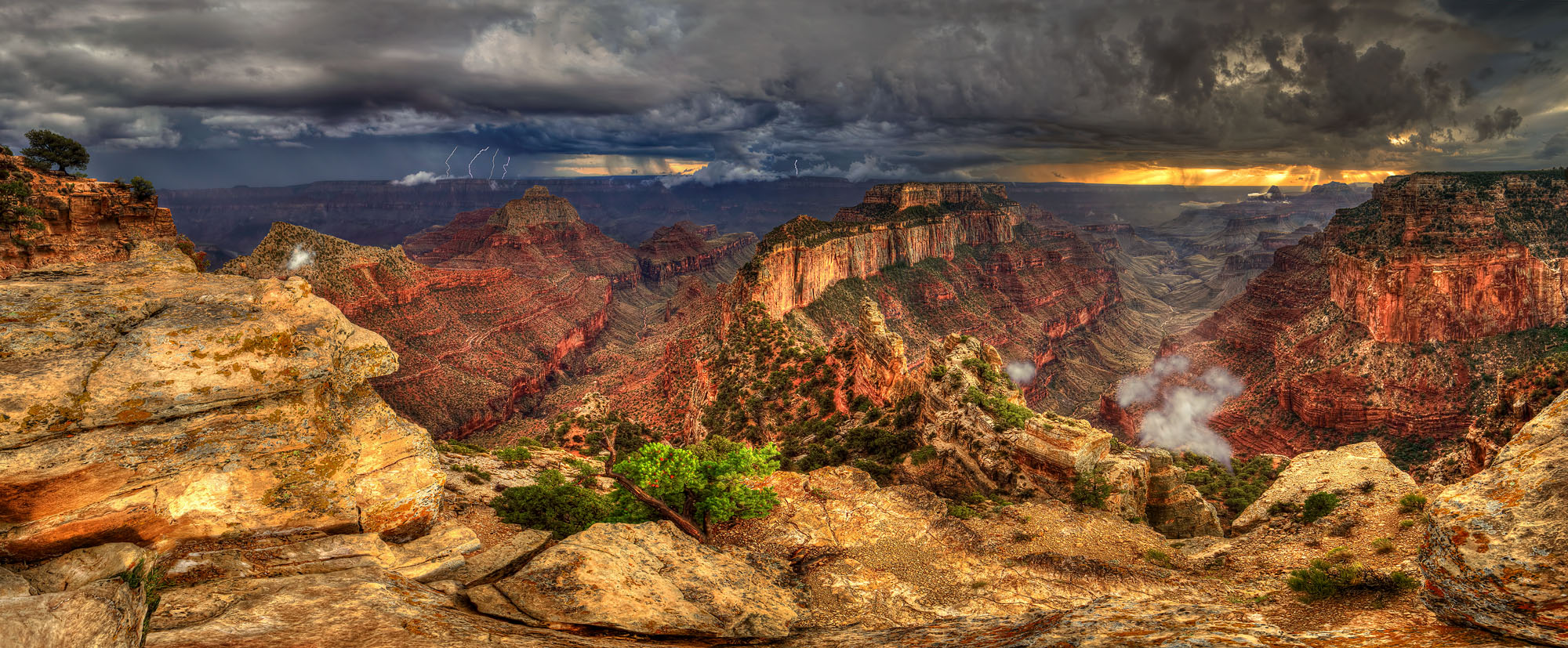
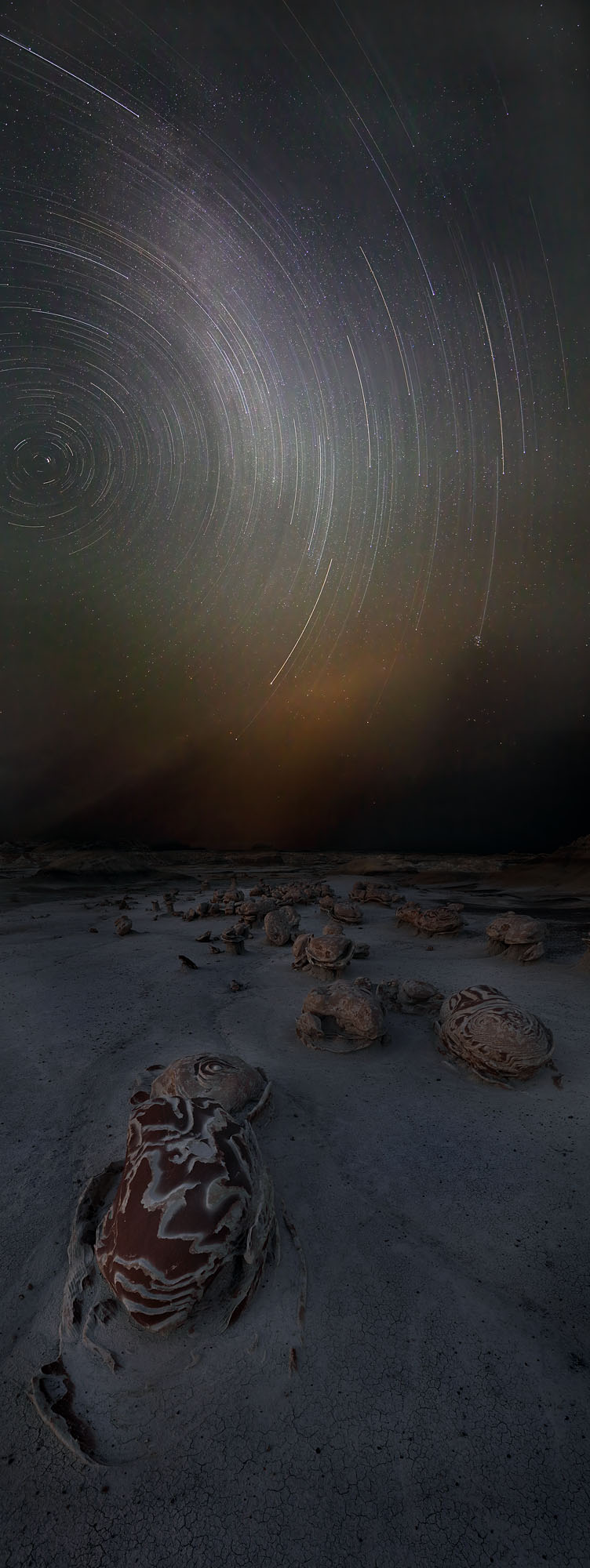
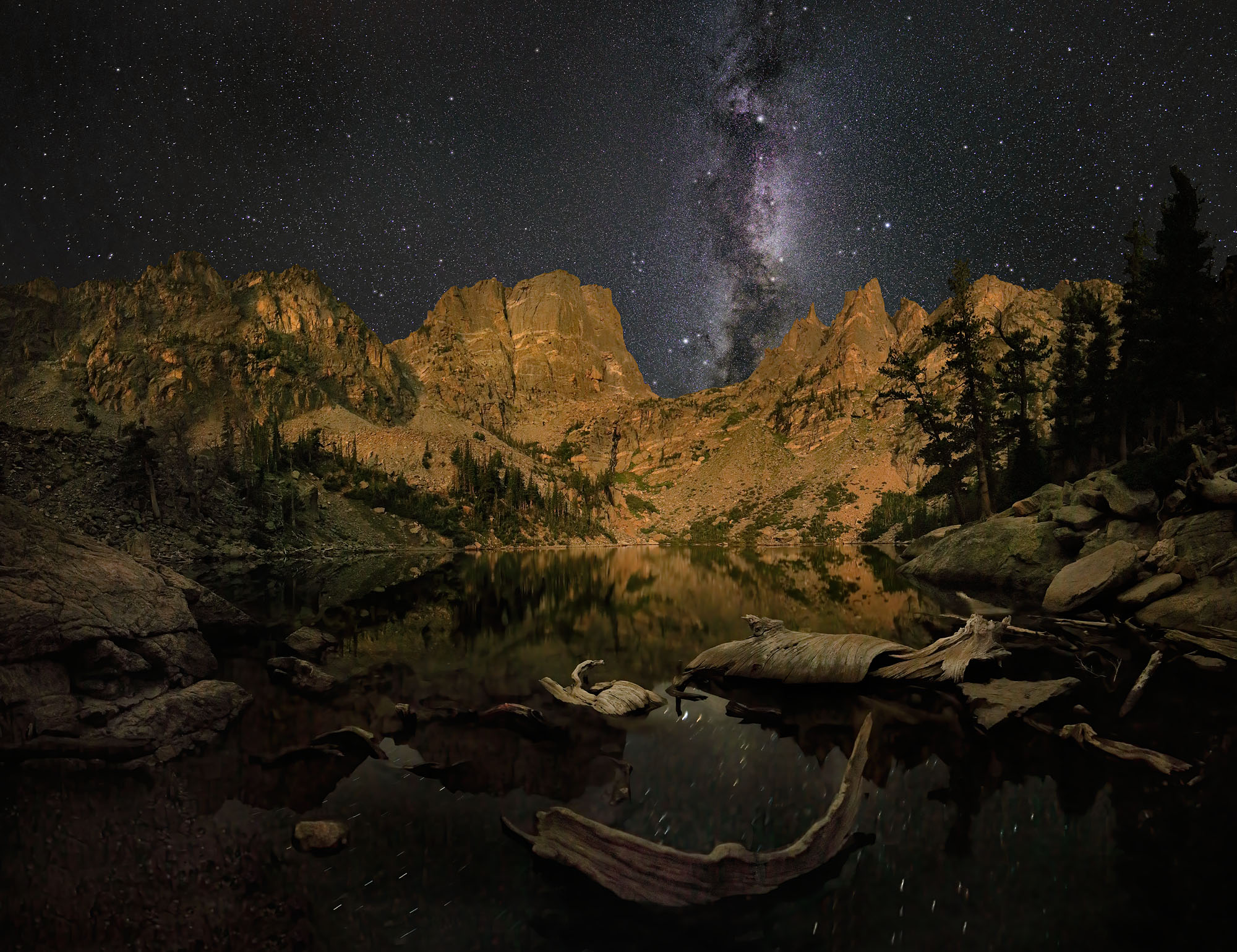

Arnaud Quesney
Bio
Arnaud Quesney got his Phd in remote sensing 25 years ago. He has been working for twenty years on Earth monitoring technologies in collaboration with international space agencies (ESA, CNES, VITO, NASA) to increase hydrological, agricultural, oceanographic, and atmospheric knowledge. He joined a private company 10 years ago where he currently holds the position of Scientific Lead. Along the course of his professional career, he developed both a broad vision and refined skills about remote sensing of the Earth surface and its applications.
For many years, Arnaud Quesney has been struck by the beauty of satellite images, an aspect that always remains on the fringe of their useful information content. Since April 2020, following his intuition that satellites images have an enormous emotional power, he’s started to exercise his creativity to reveal this potential and has engaged in an artistic activity during his free time. He describes himself as an observer, a witness, and a sentinel of natural spaces.
His artwork stems from Sentinel-2 images, processed through his own treatment chains relying on Artificial Intelligence and most recent algorithms, requiring refined skills in satellite imagery processing that he happens to master.
The spatial morpho-structures of his work are of natural origin. Colorimetry & luminosity are remapped based on aesthetic and emotional criteria to offer a deeper experience, one that refers to a percept, according to the proposal of the French philosopher Gilles Deleuze. The resulting artwork intends to provide a heightened perception of the Earth seen from a different perspective, an emotional encounter that triggers environmental awareness and empathy towards the Nature. He wishes to use art to develop a new narrative about our Mother Earth, to mediate the messages that are seen on Gaia’s skin.
Art abstract
This image has been designed from Sentinel-2 L2A images (source: ESA SciHub), located at the border between Gabon and the republic of the Congo. It is highly contrasted scenery with a fractal hydrographic network (brown and yellow parts) surrounded by dry Savanna (blue areas), revealing how the ecosystem evolved according to the presence of water. Through an artwork on colorimetry and luminosity, the hydrographic network suggests a vegetal cover with branches and leaves attracted towards the Sun. It is as if a network of veins running under Earth’s skin replicates the organic arrangement of trees morphology. It illustrates the generic fractal nature of Mother Earth self-organization at different levels. As organic arrangements with inner fractal networks (pulmonary alveolar system, blood vessels, neural networks) we, human being, can identify ourselves with this organic vision our planet Earth.
However, this photograph is indeed taken somewhere on Earth, which provokes questions, reflections and emotions through an innovative remote sens(ory)ing experience.
Engaging into this artwork allows me to connect closely to our Mother Earth; I can see it, zoom in all her details, and witness her abundance, her diversity. This creation process leads to a genuine immersion into her resilience as well; I can hear her life force and the sound of trickling water, of rustling leaves, of hot breezes… Through visual emotions, I wish this work to contribute to raising our level of consciousness and I seek to provoke a greater involvement; I feel mesmerised by her beauty, concerned by the fragility/temporary nature of wildlife and humble face to something greater than me.
This image is available at high resolution (300 dpi) and should be printed ideally on large format (at least 60x60 cm2 up to 120x120 cm2) to appreciate the overall pattern while having access to explanatory details as you get closer. An acrylic glass coating is also suggested so to get a glossy rendering and an even greater depth of image.
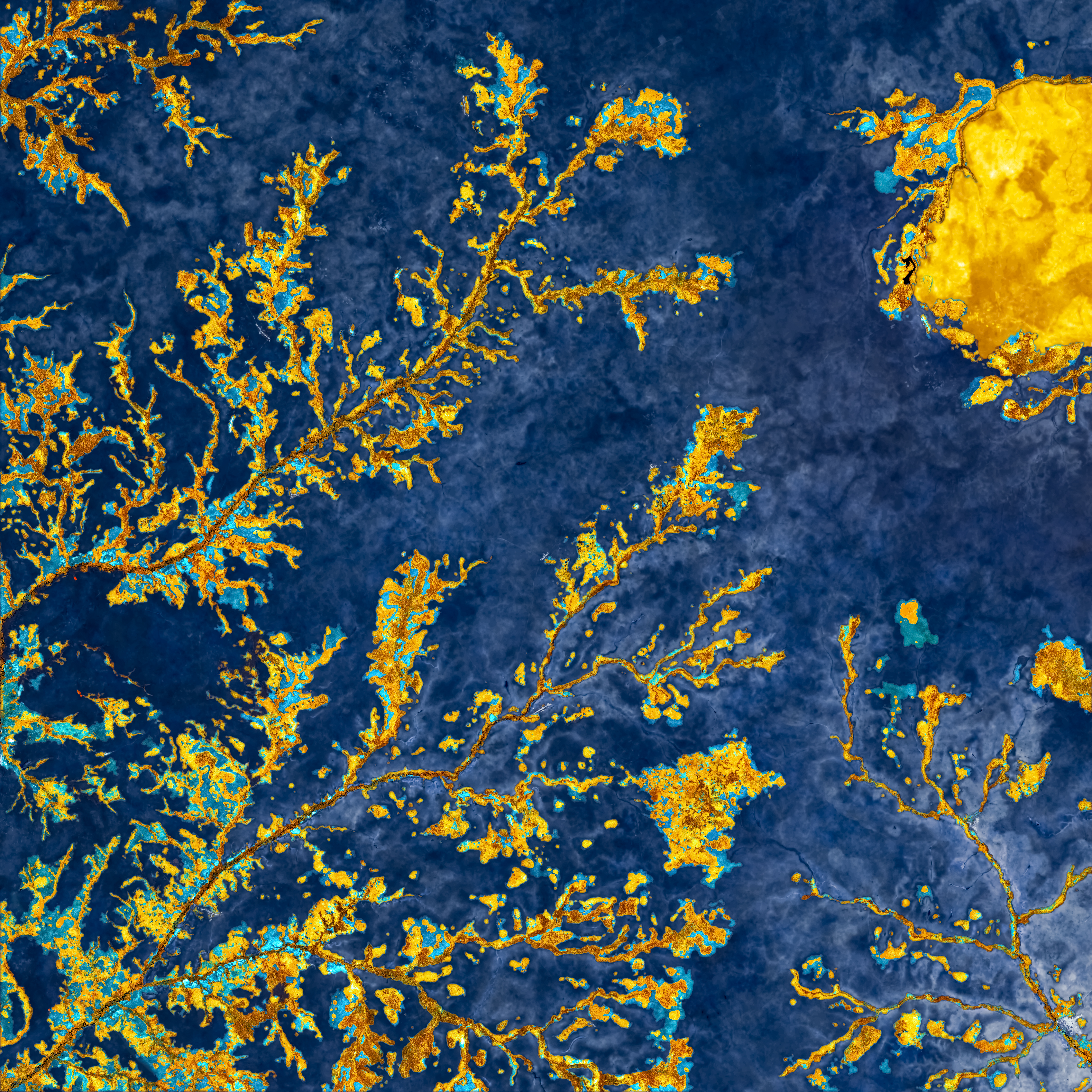
Mohammad Rakibul Hasan
Bio
Mohammad Rakibul Hasan is a Dhaka, Bangladesh-based documentary photographer, filmmaker, and visual artist. His work explores human rights, social development, migration, gender violence, and the environment. Hasan was nominated for many international awards and won hundreds of photographic competitions worldwide, including the Lucie Award, Human Rights Press Award, and Allard Prize. His latest exhibition was on ‘Gender Violence and Migration,’ organized by the UN in Thailand. His photography projects exhibited in Photo Basel, Shanghai Photo Festival, NordArt Festival, Berlin Photo Festival, Belgrade Photo Month Festival, and many other galleries worldwide. He studied a One-Year Certificate in Creative Practices at the ICP – International Center of Photography, New York, with the Director’s Fellowship. Hasan holds a Postgraduate Certificate in Photography from Falmouth University, UK, and an Undergraduate Certificate in History of Art from Oxford University. He also pursued a Postgraduate Diploma in Photojournalism from Ateneo de Manila University and graduated in Film & Video Production from UBS Film School at the University of Sydney. He is represented by ZUMA Press, Redux Pictures, and °CLAIR Galerie. He is currently pursuing an online MA in Global Film and Television at the University of Hertfordshire, UK. He is a contract photographer for Thomson Reuters Foundation and contributing photojournalist for the Daily Star. He is a Konrad Adenauer Stiftung Fellow and was a TEDx speaker.
Art abstract
The Last Savings at Bengal Delta
Arati Biswas, a 70 years old widow who lives at the shore of the Bay of Bengal, doesn’t know the “Climate Crisis” and why her food storage is getting shorter day by day. She doesn’t even have any idea about global or local economic recession due to Novel Coronavirus spread. Her husband died 35 years ago. She had the only married daughter, and her husband is a street hawker, and they had three children to feed. Arati lives with her daughter; every day, she makes crackers and walks miles after miles in villages to sell her product as her daughter cannot work due to illness and the daughter’s husband has a spinal injury, none of them can earn their living. These crackers are the food by selling she buys food to feed her family. She lives in the world’s most catastrophic zone at the world’s largest mangrove forest, the Sundarbans, where hundreds of Royal Bengal Tigers nested their home. Still, the frequent cyclones cannot sustain anyone, not humans, animals, or other species. The scientists forecasted that the seawater would drown the whole coastal belt of Bangladesh around the Sundarbans by 2050.
We’re one step ahead to embrace the apocalypse for the sake of building worldly wealth, the so-called development of civilization, maneuvering the structure of the earth by supplying to the demand hyper-consumption. The recent data from the Global Carbon Project shows that the top five countries China (28%), the United States of America (15%), India (7%), Russia (5%), and Japan (3%), produce the most of the carbon dioxide [1]. This culprit gas is causing the world's temperature to rise and bring adverse climate experiences affecting human survival and destabilizing ecological harmony. The rest of the world only produces 23% carbon while Bangladesh emits non-significant but already has become a scapegoat of the climate crisis.
[1] Global Carbon Project. ""Global Carbon Budget 2019,"" Page 1811. Accessed Nov. 27, 2020.
